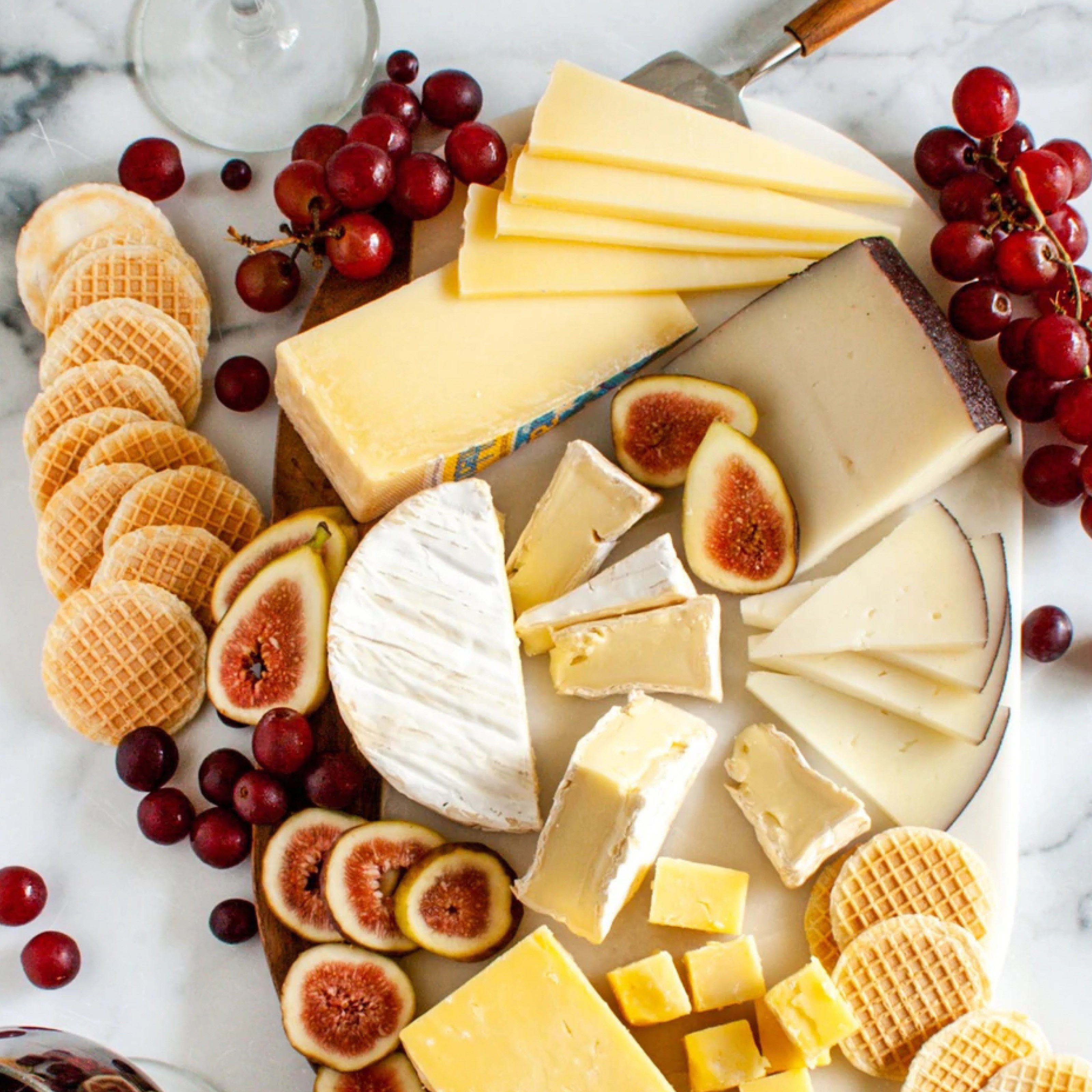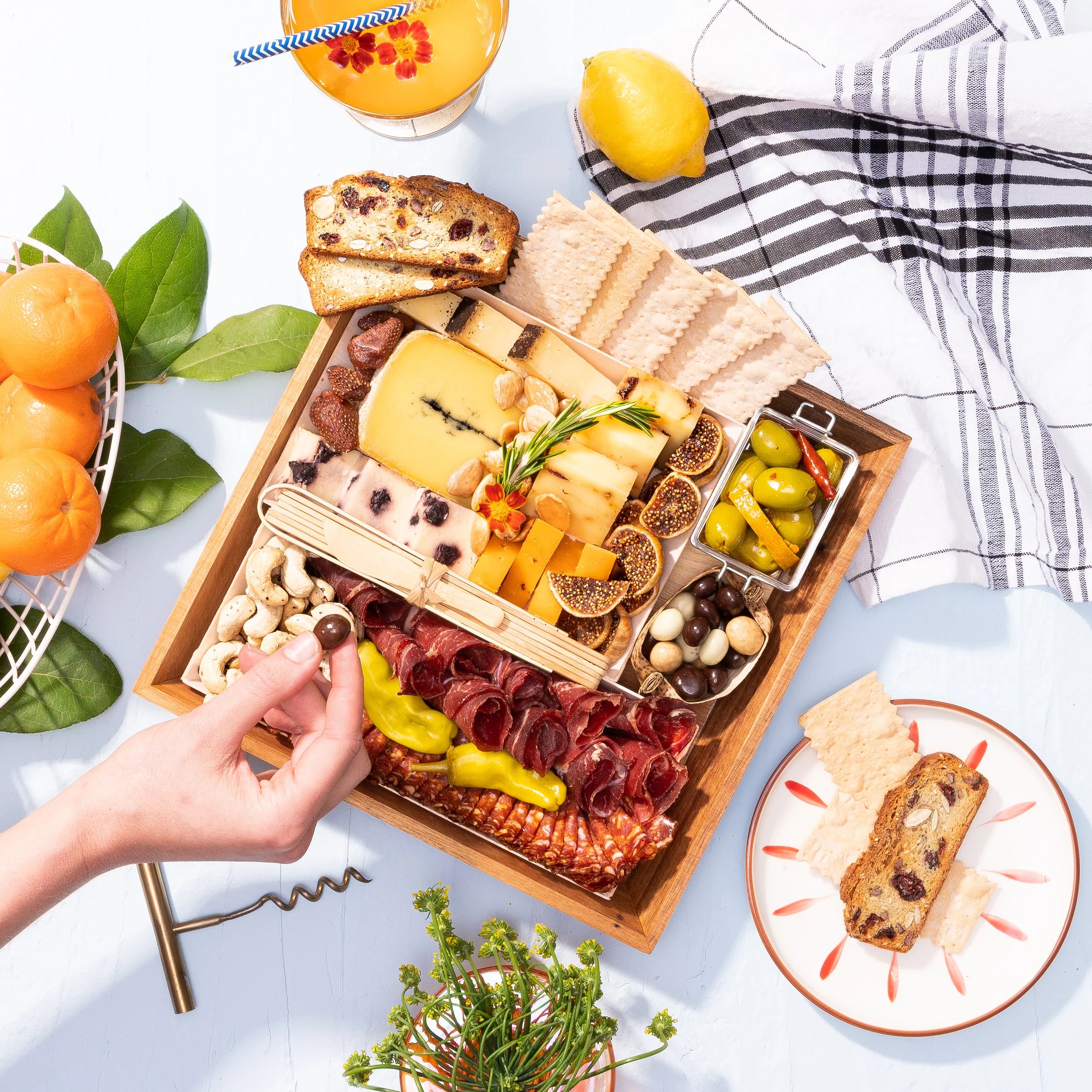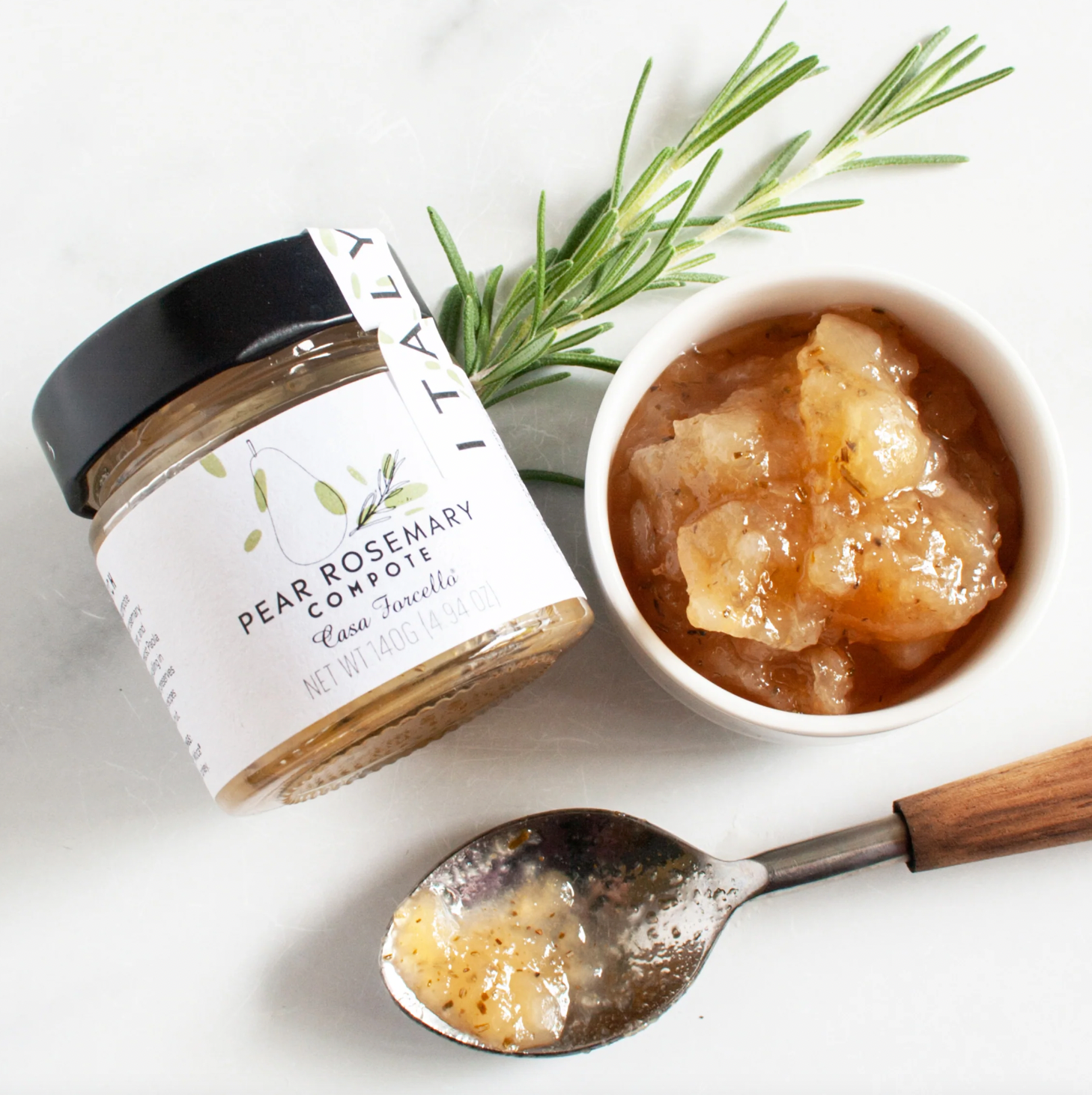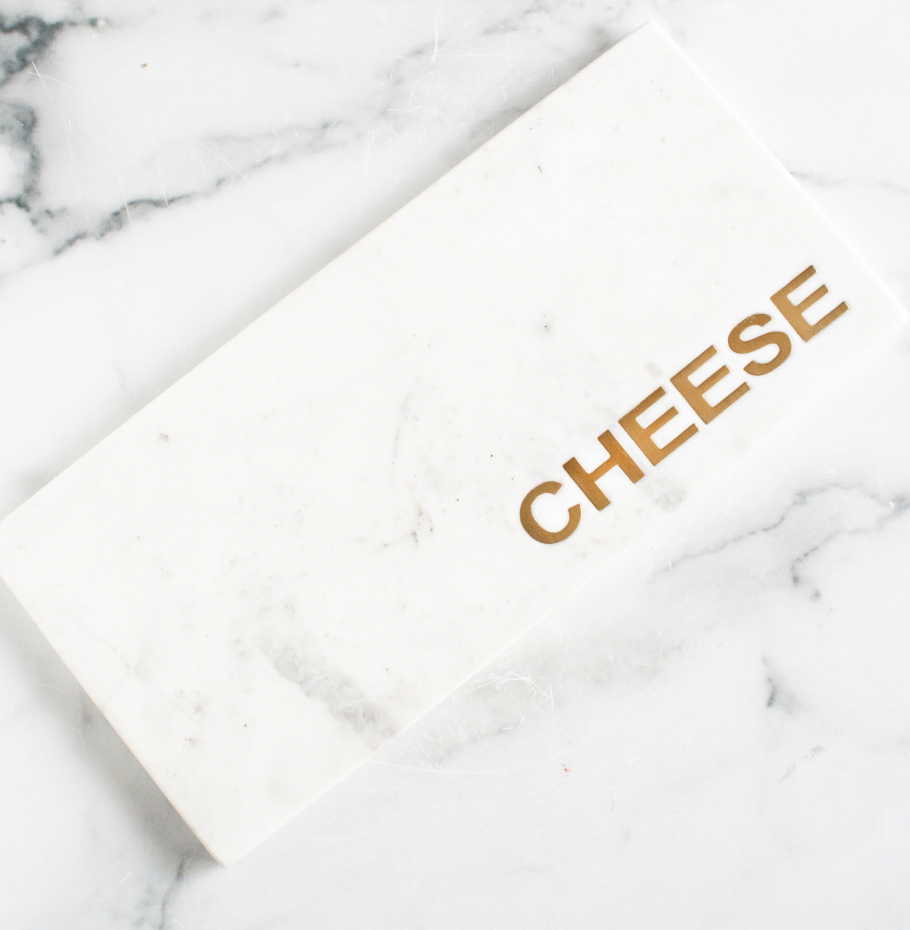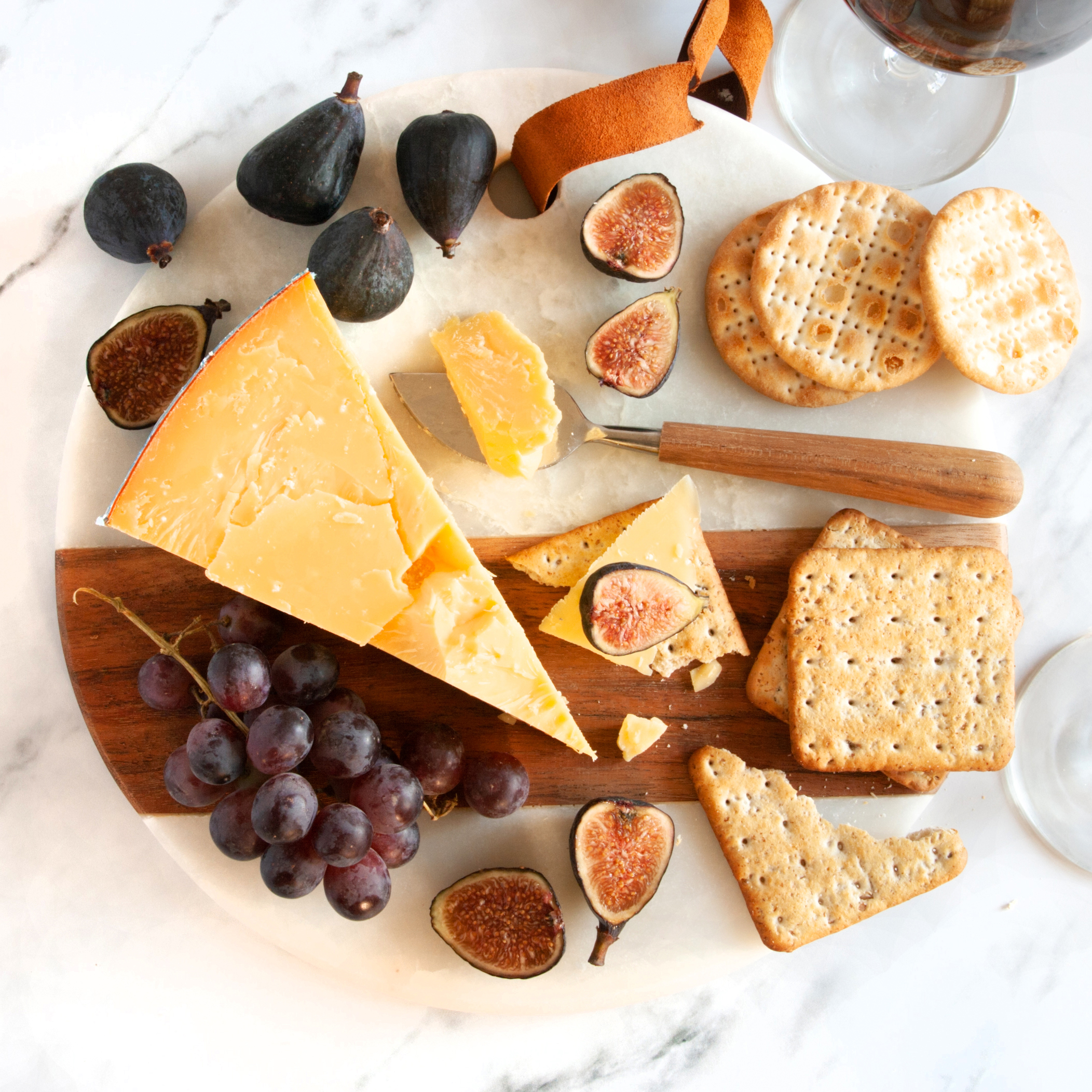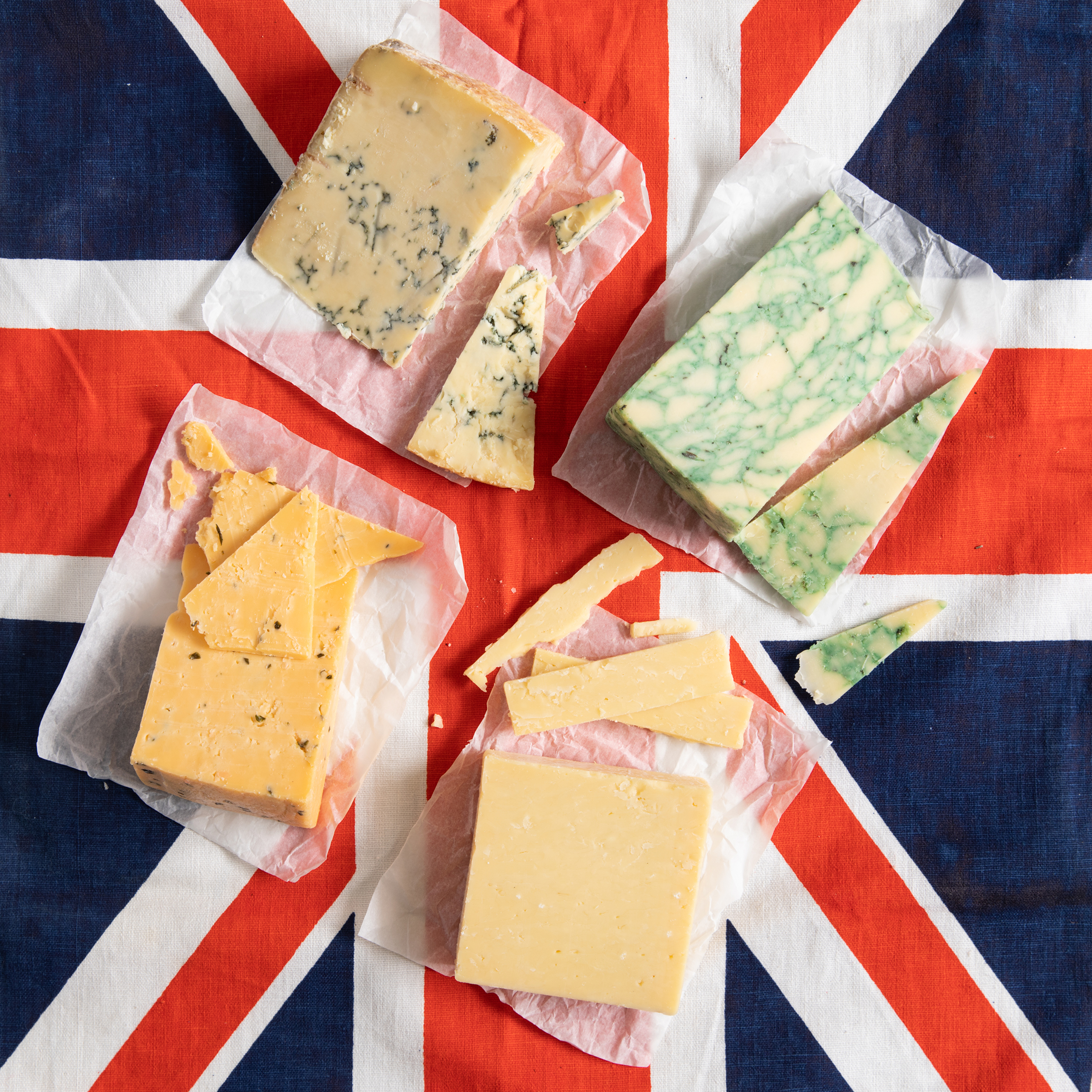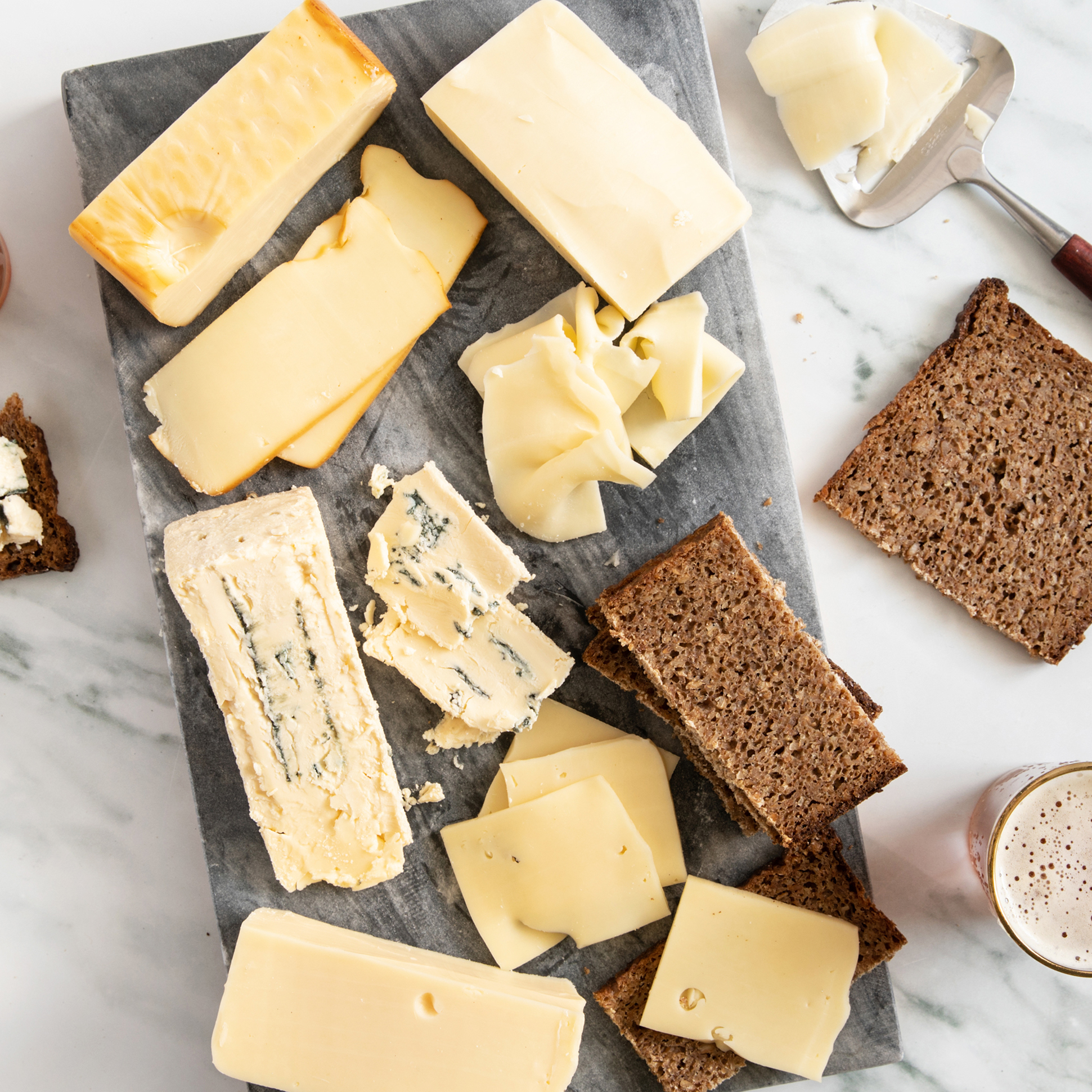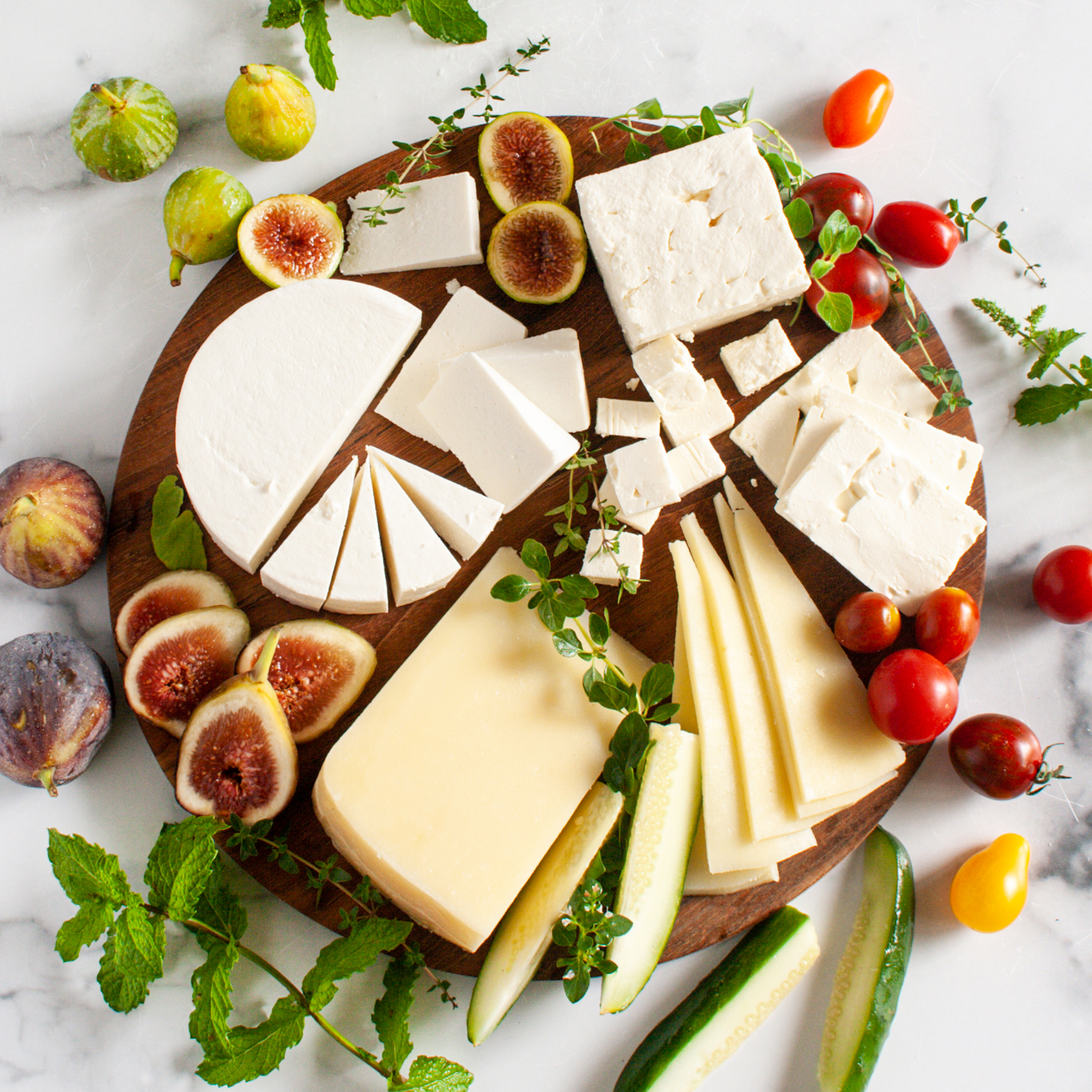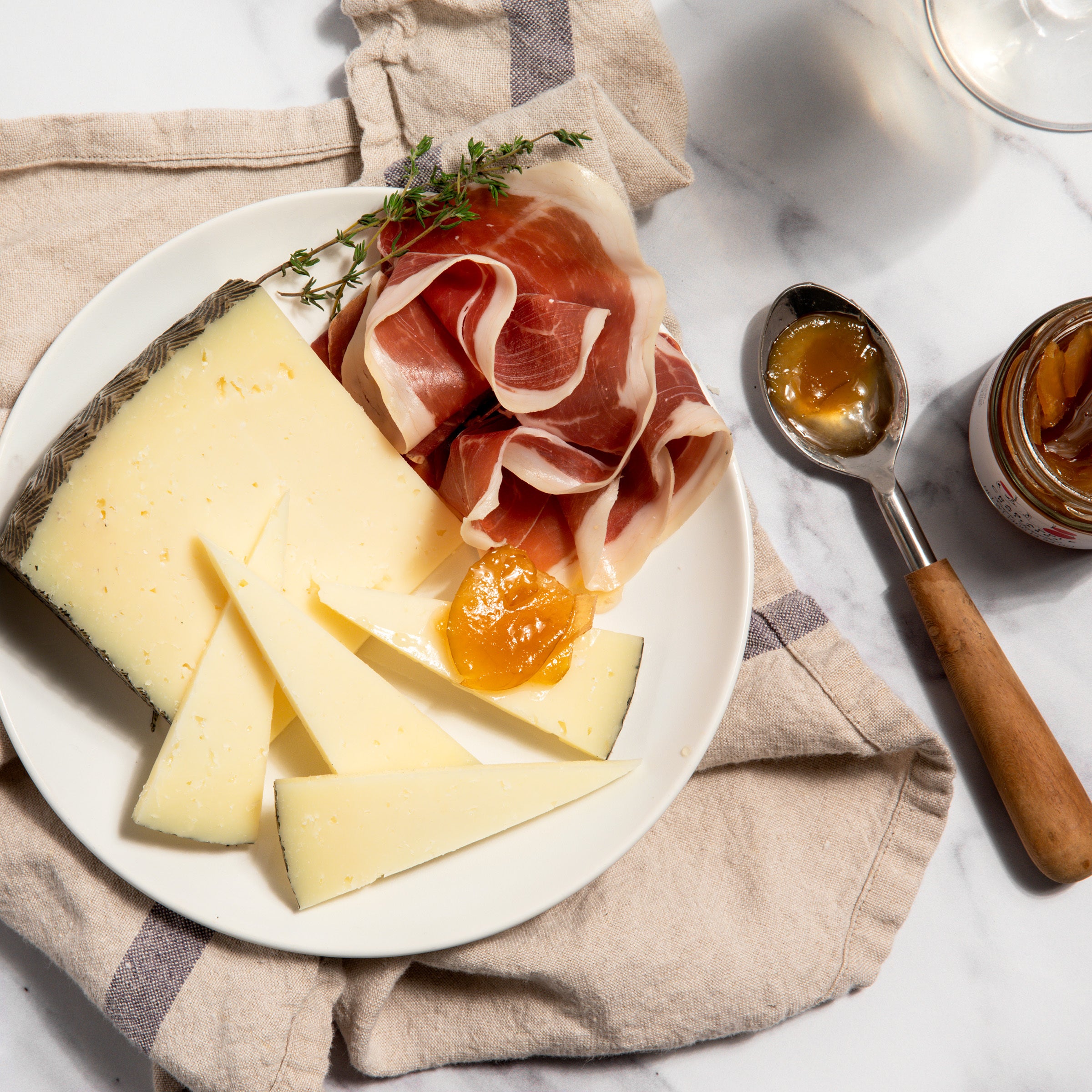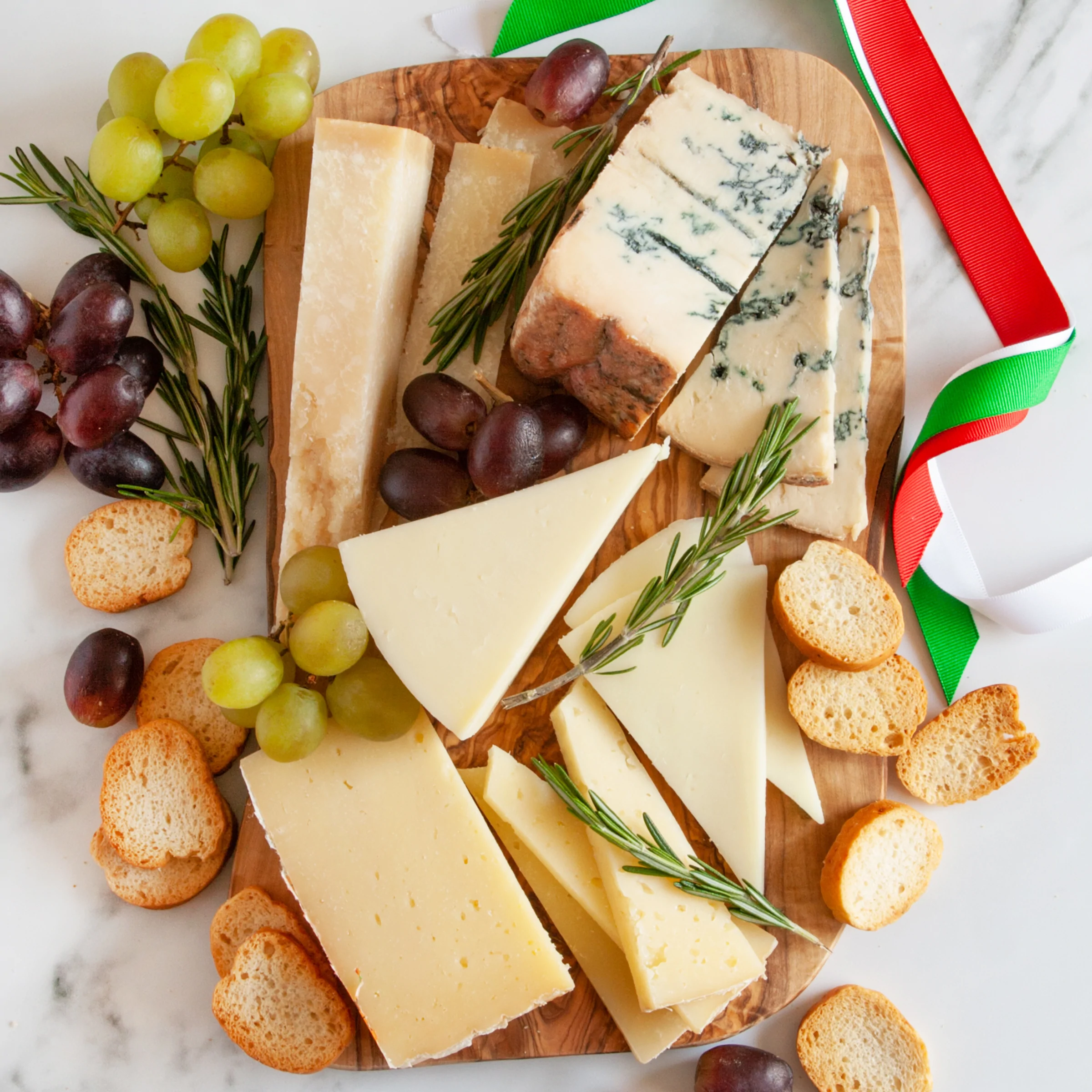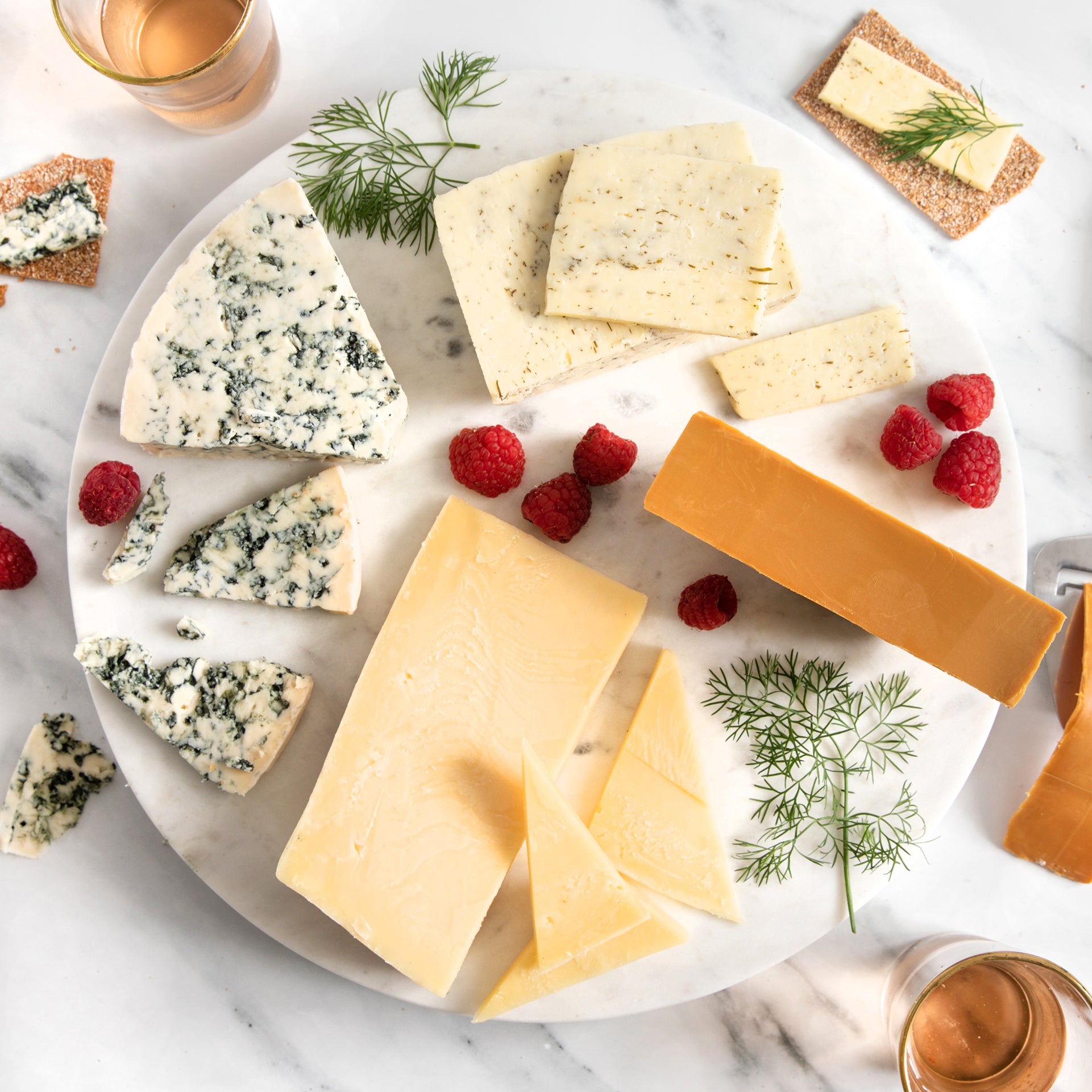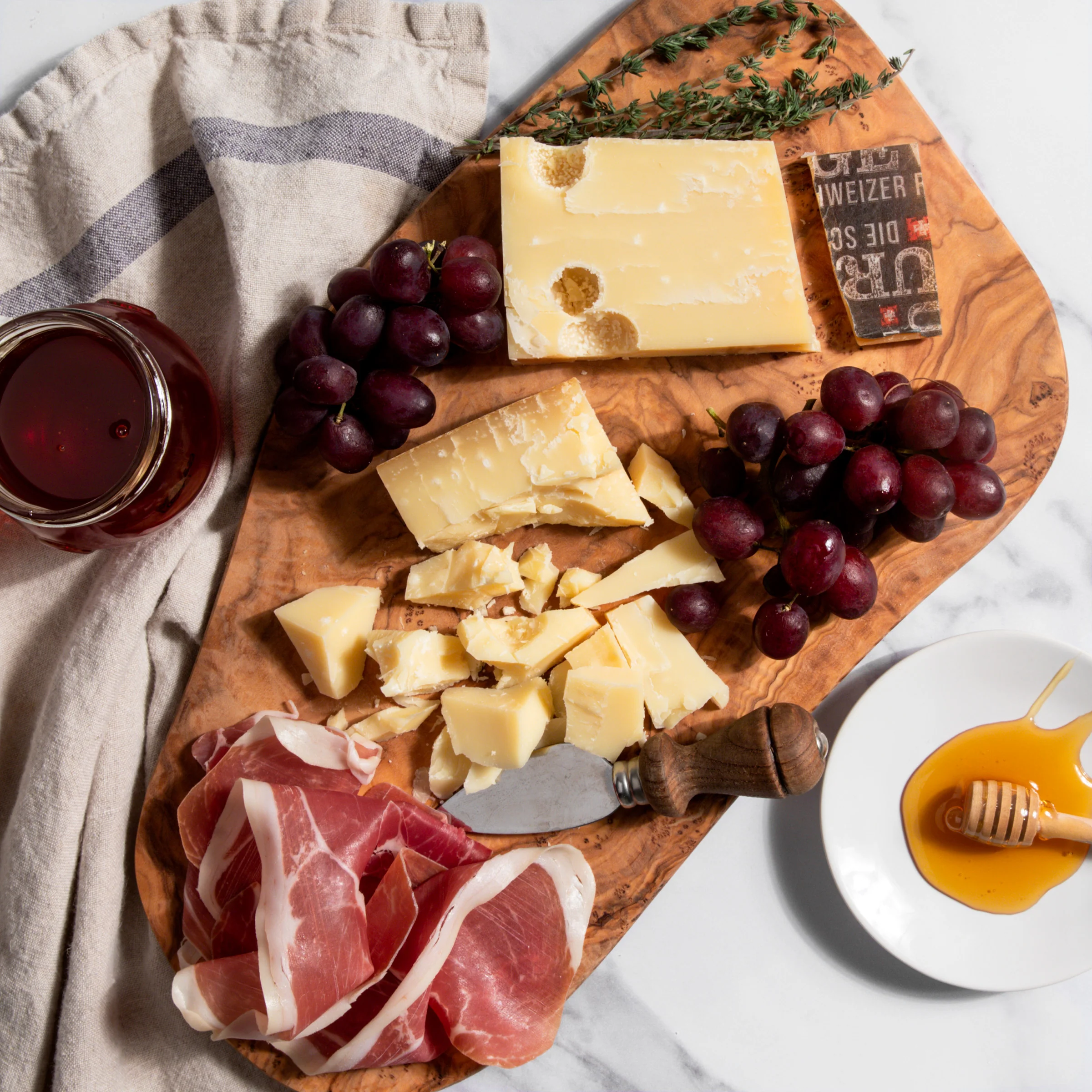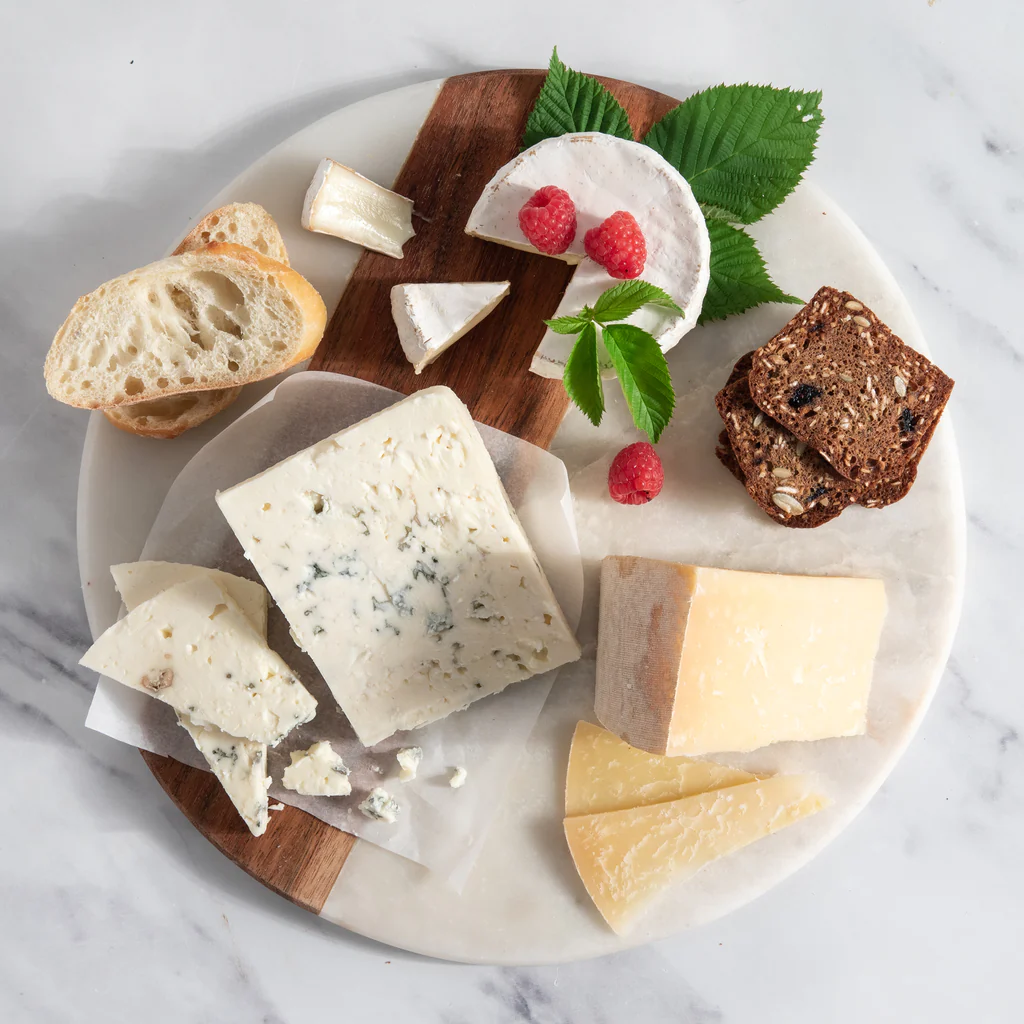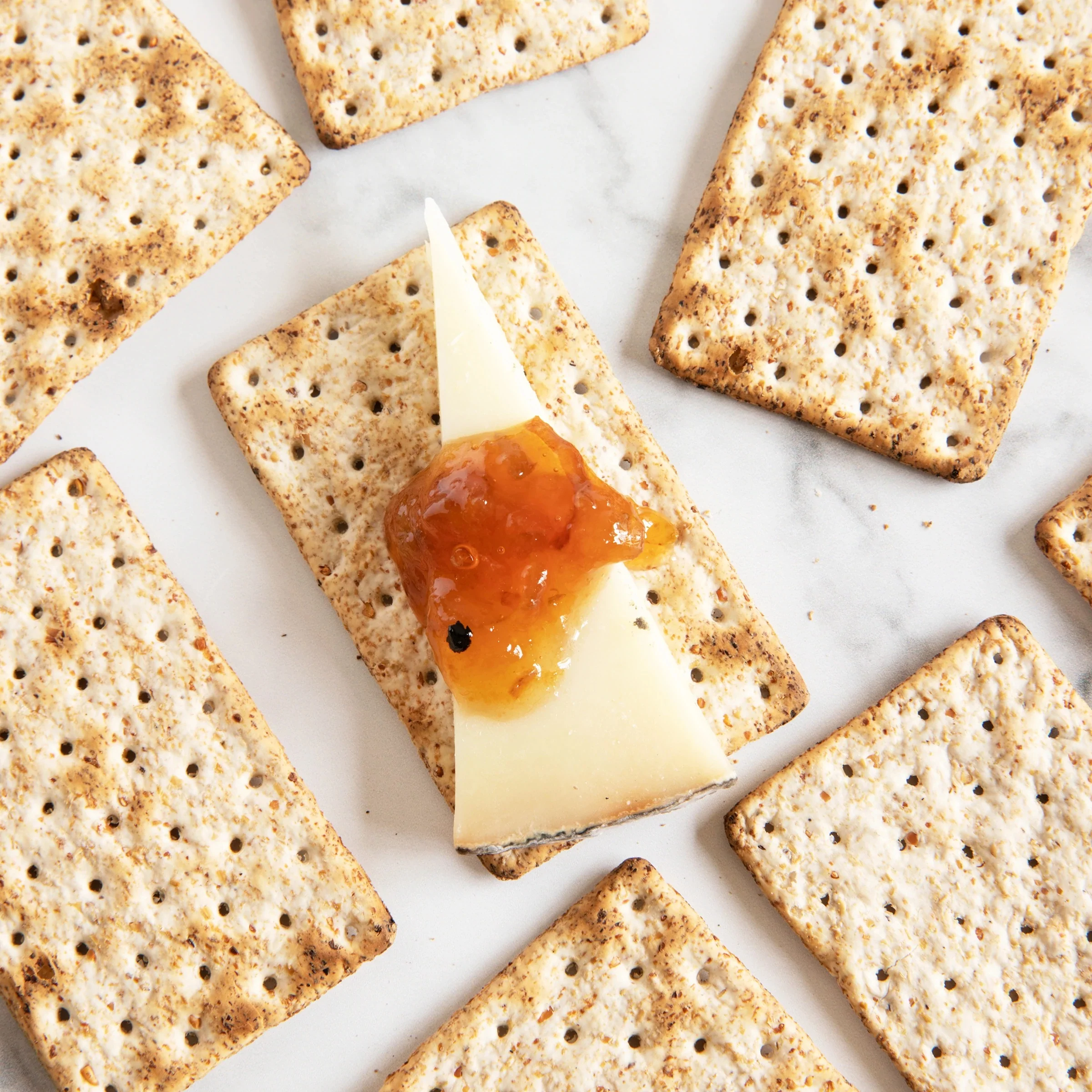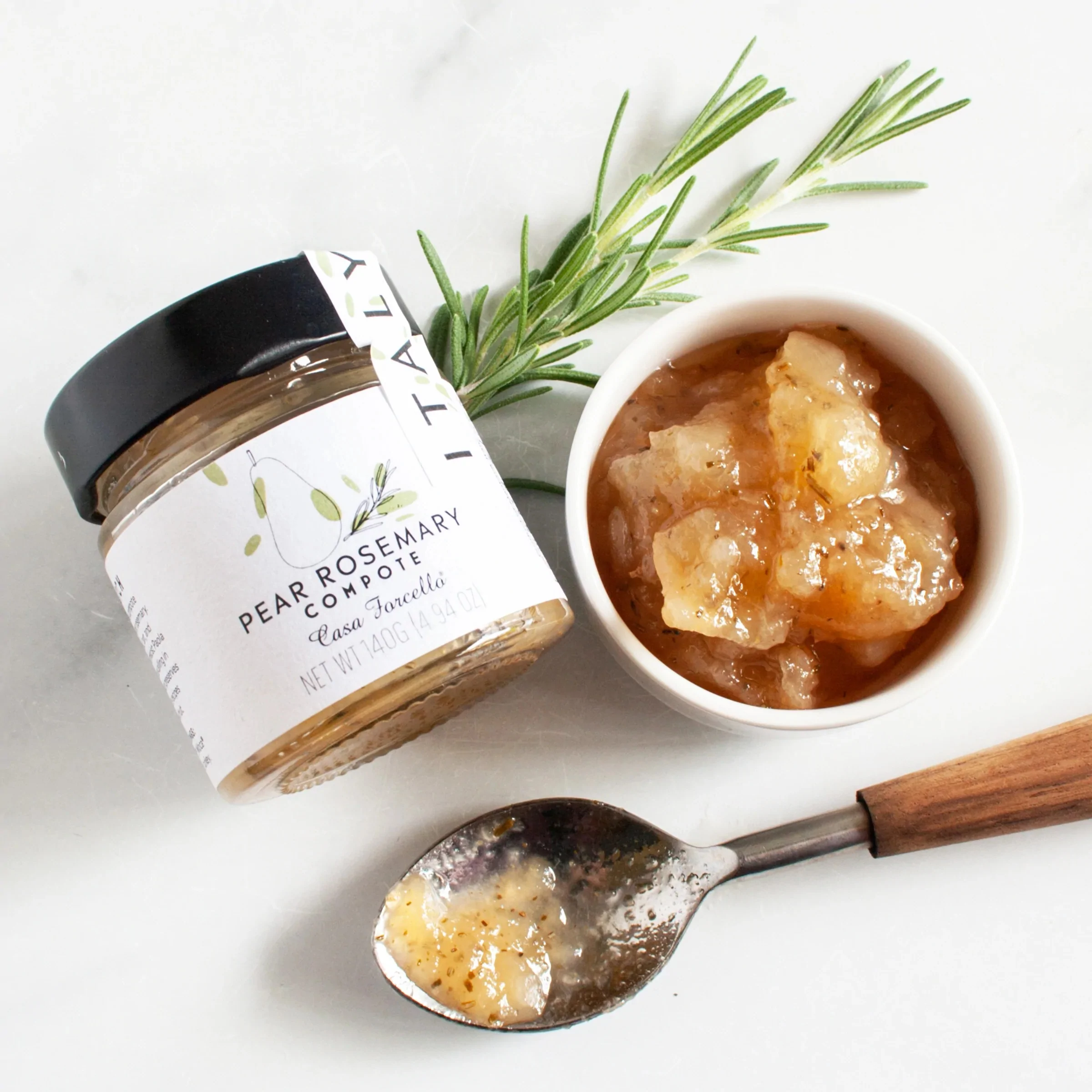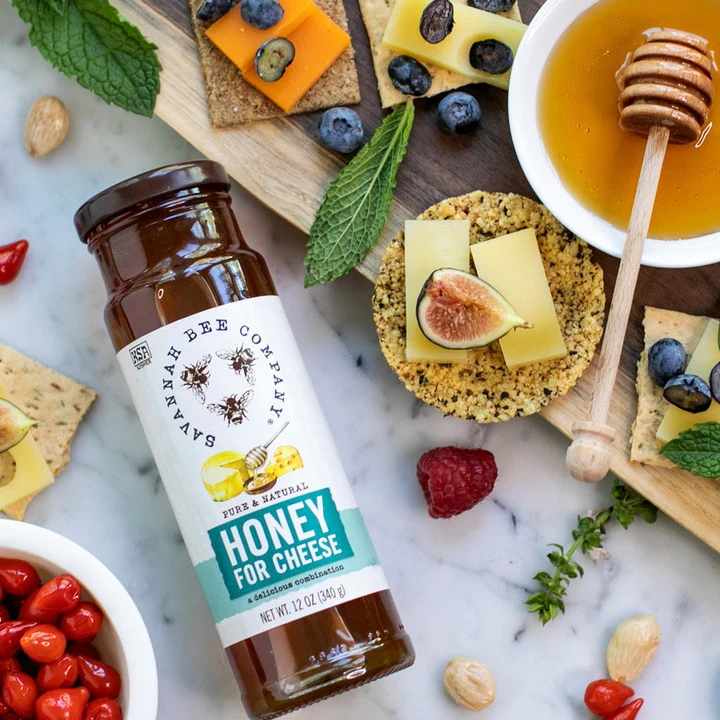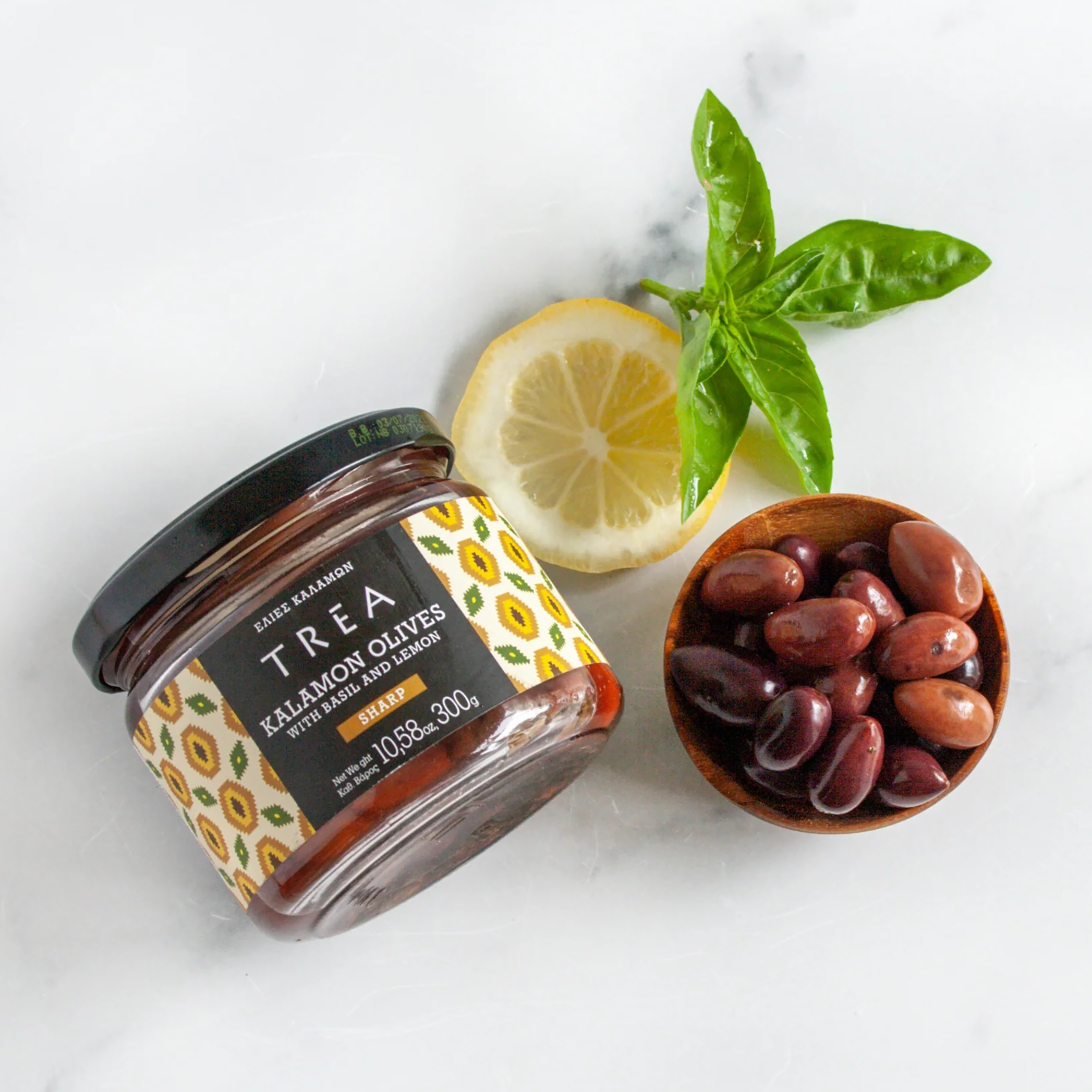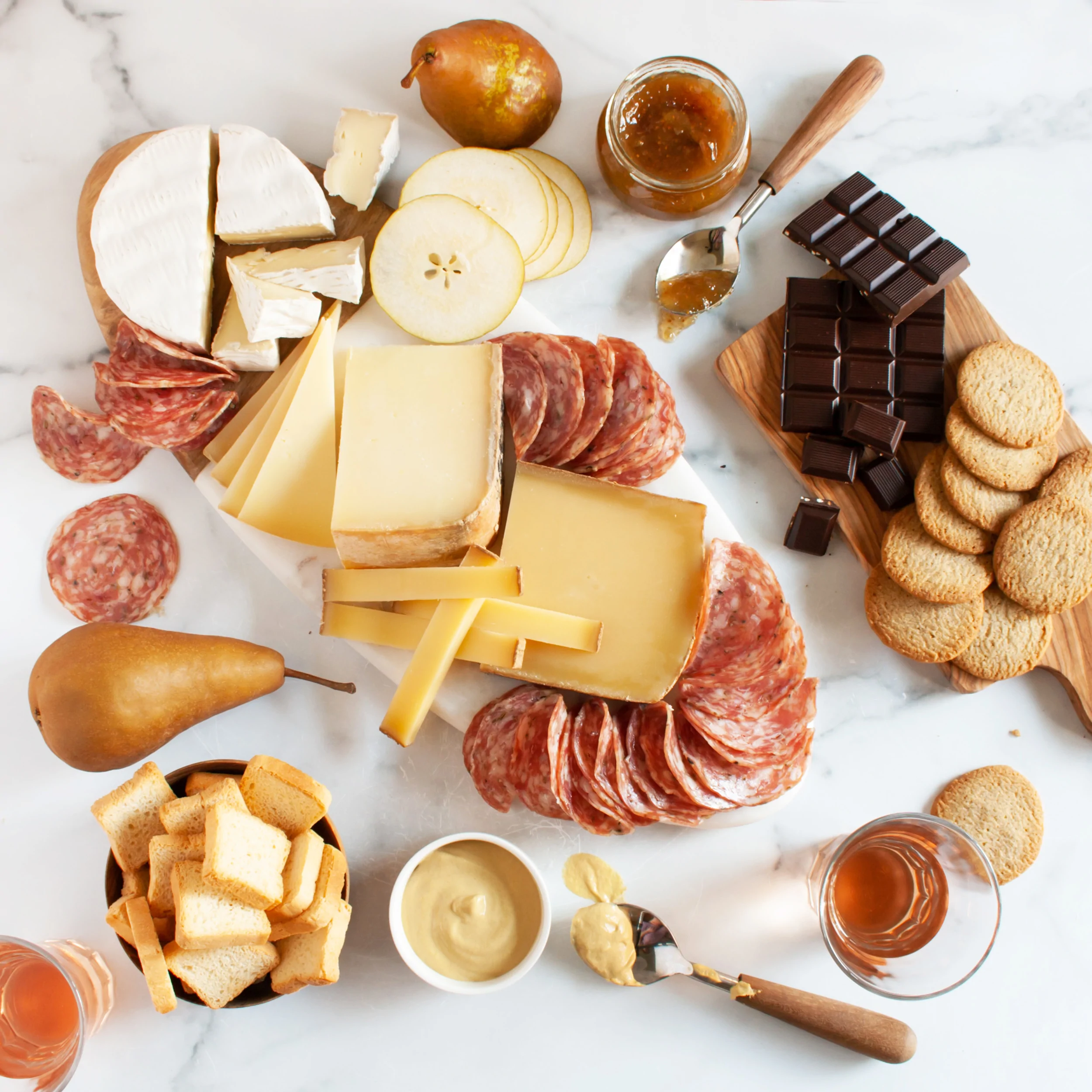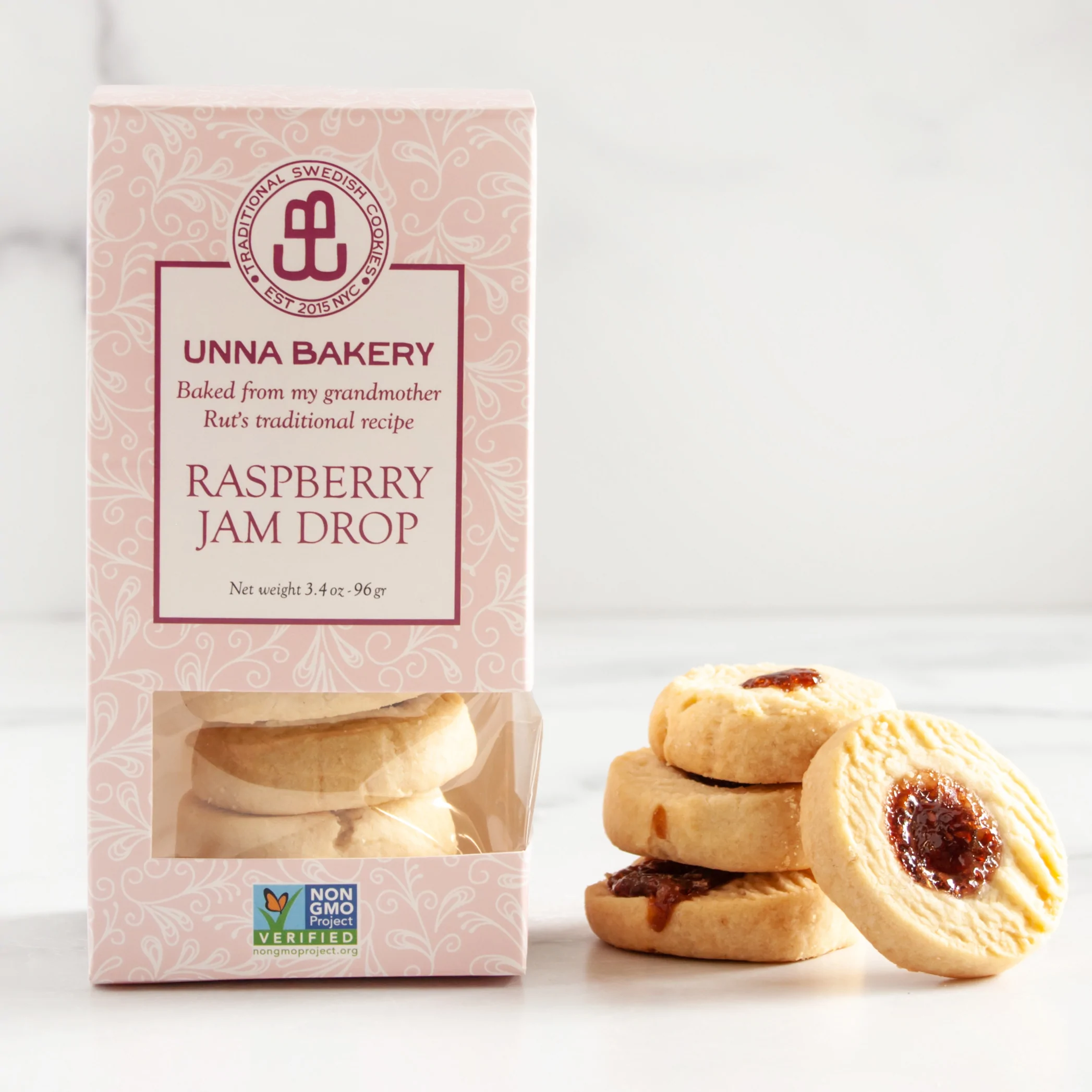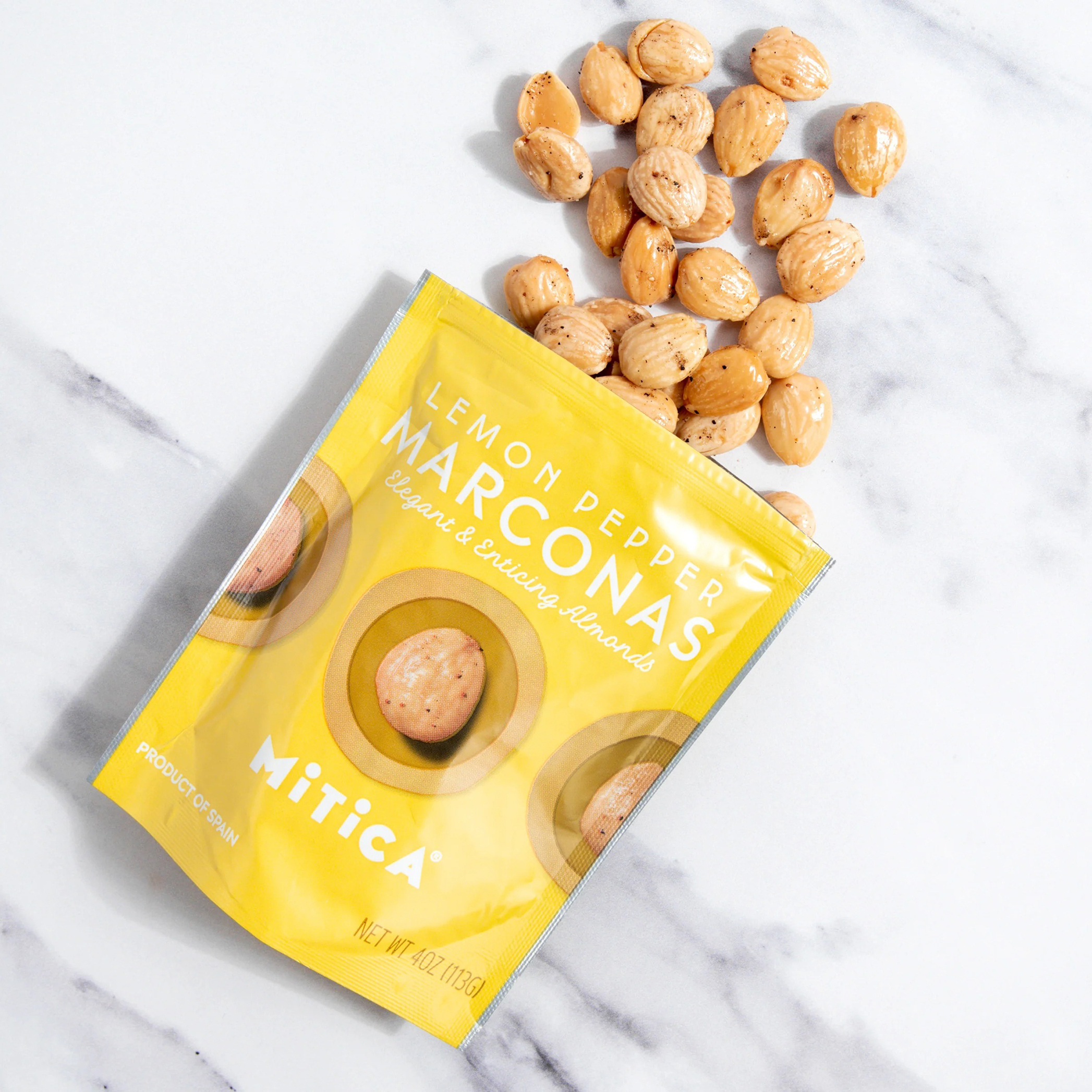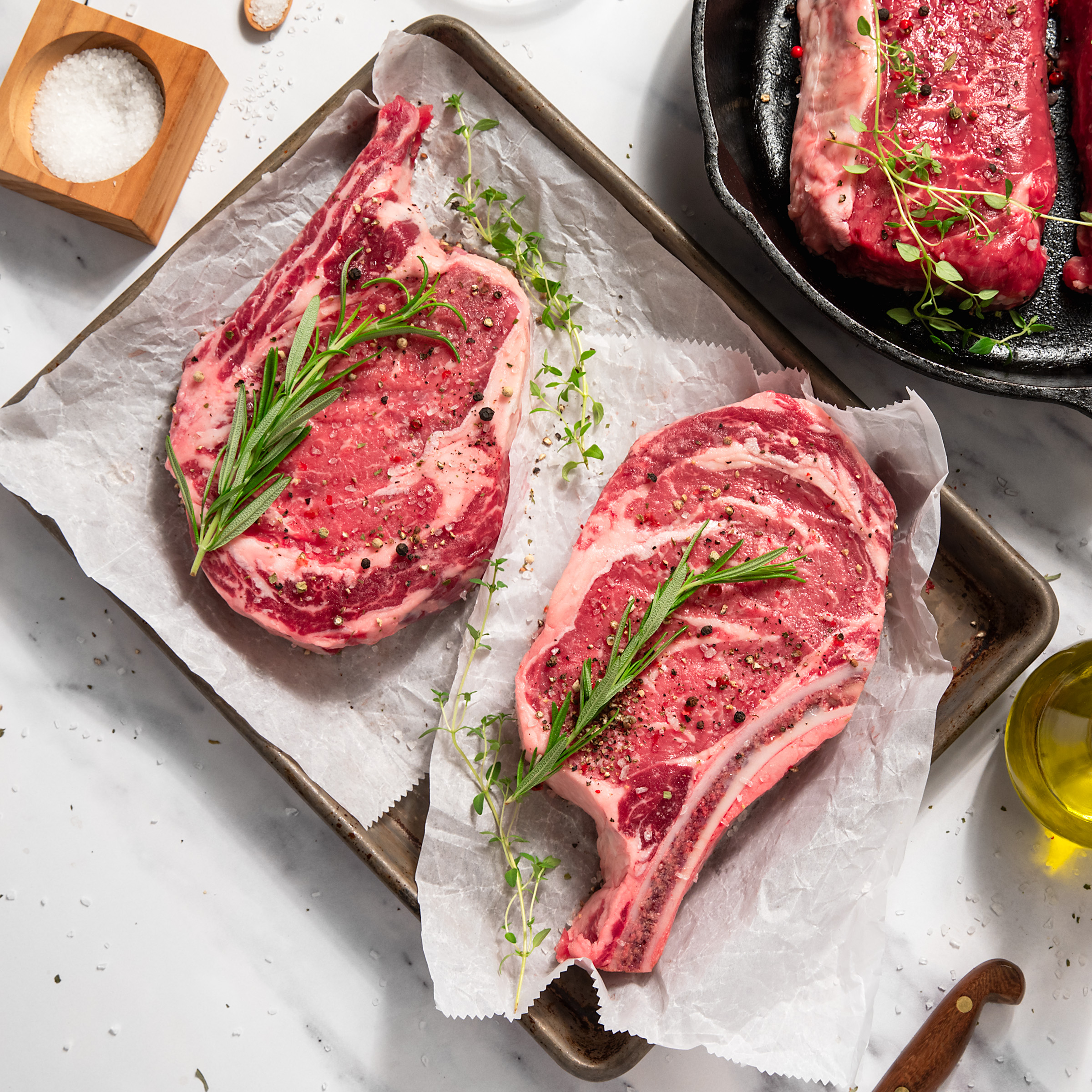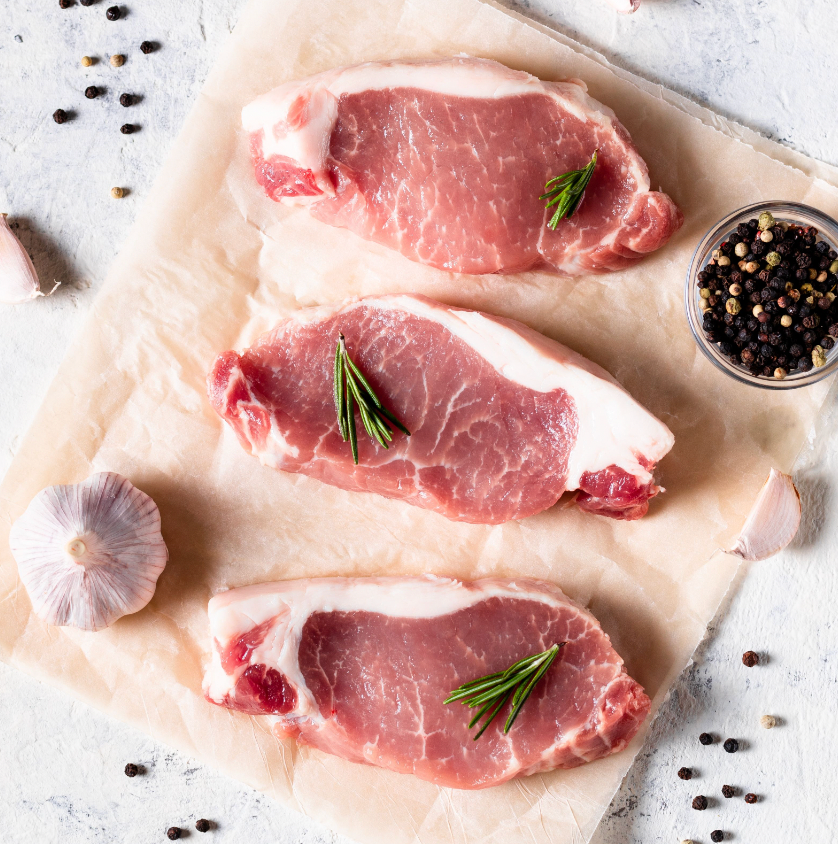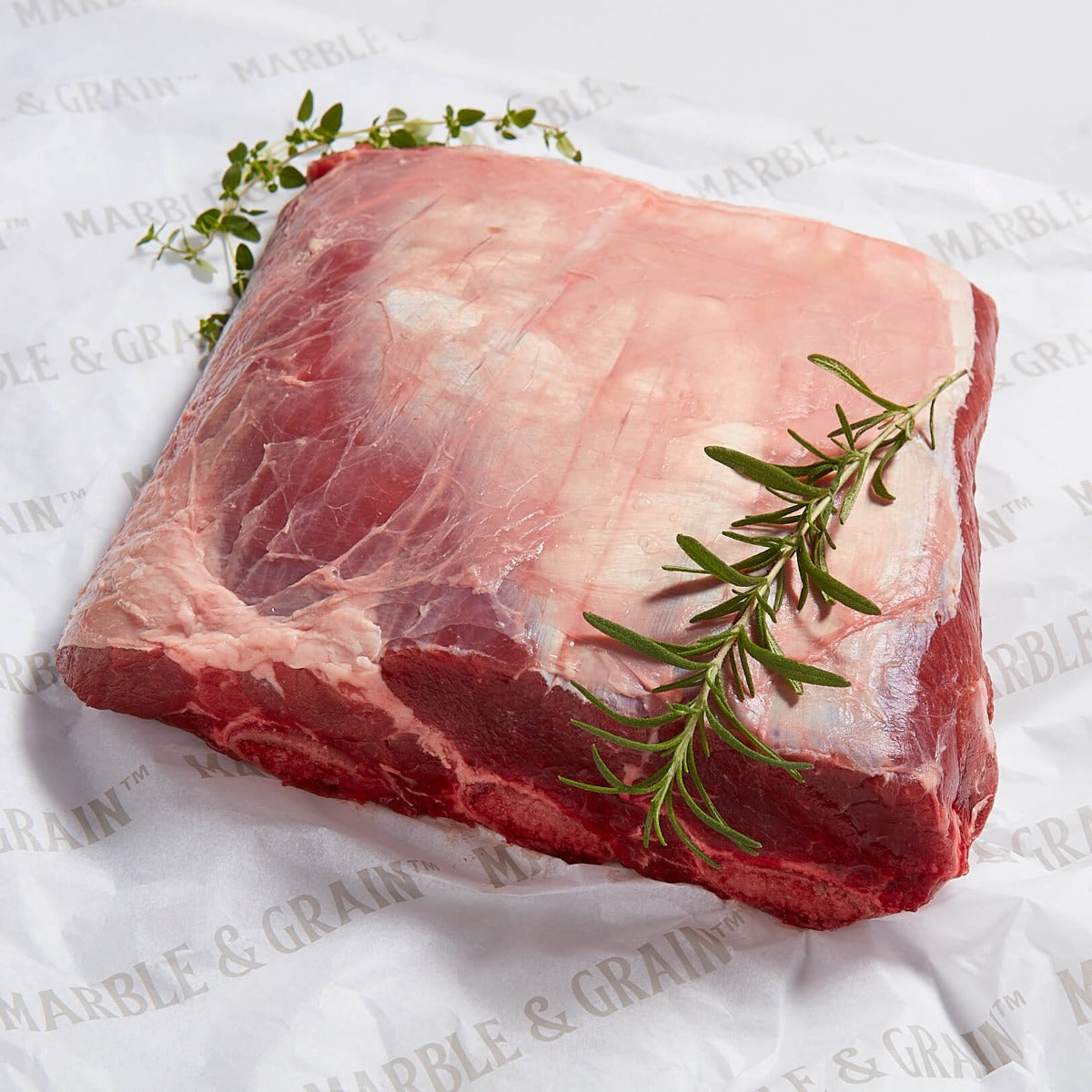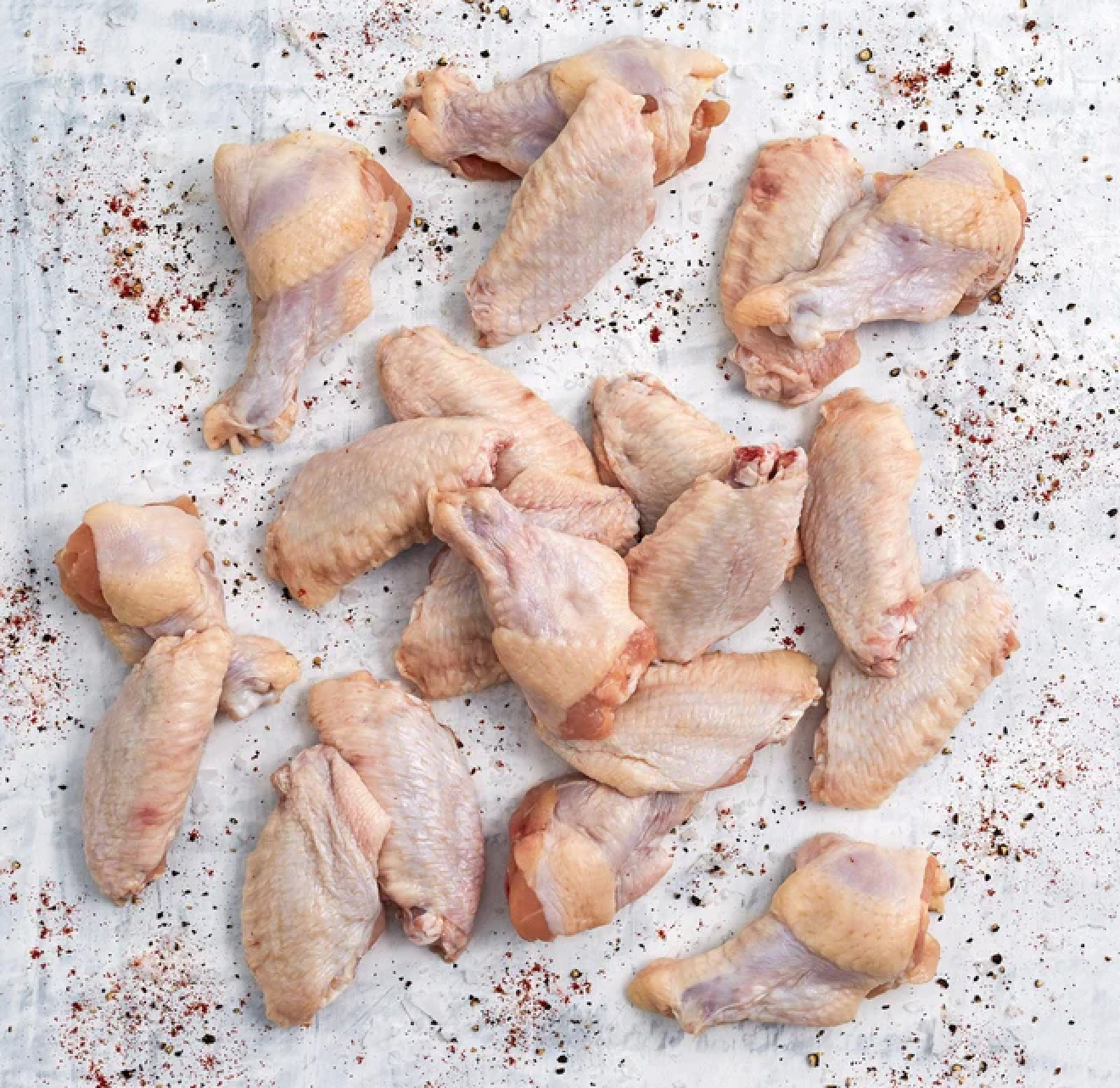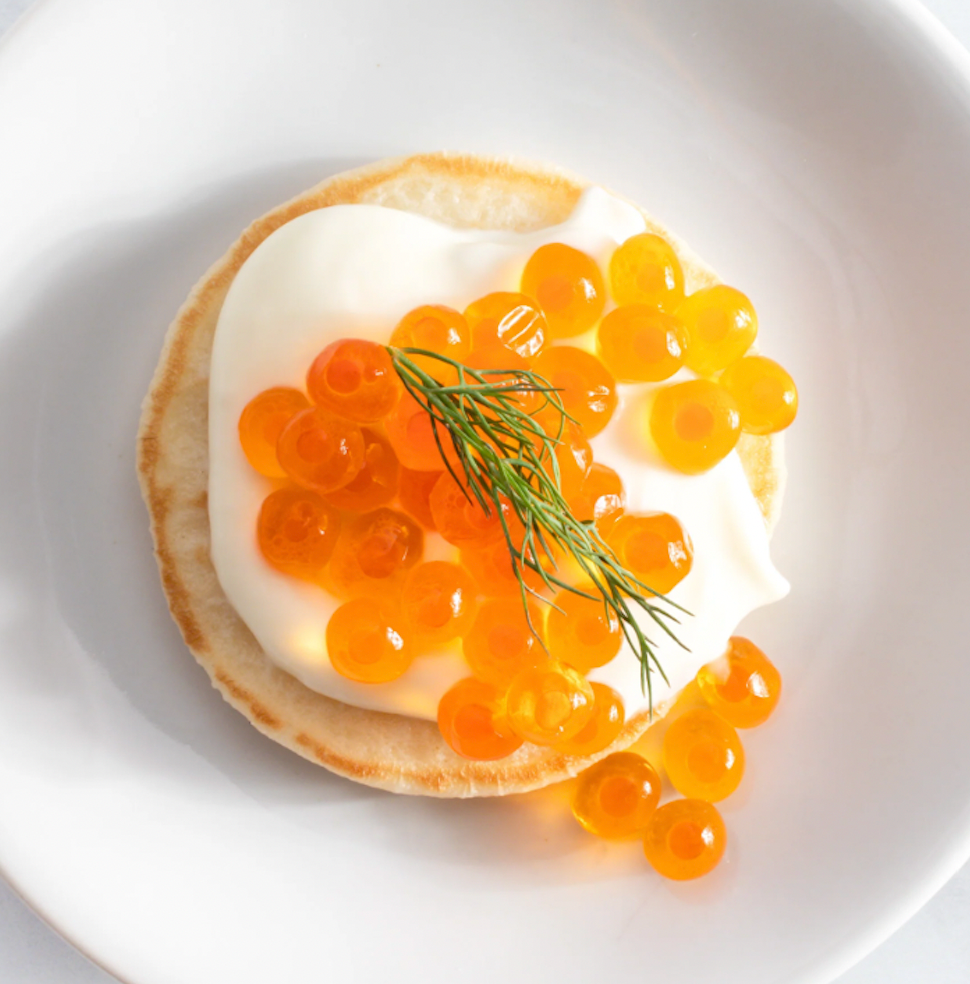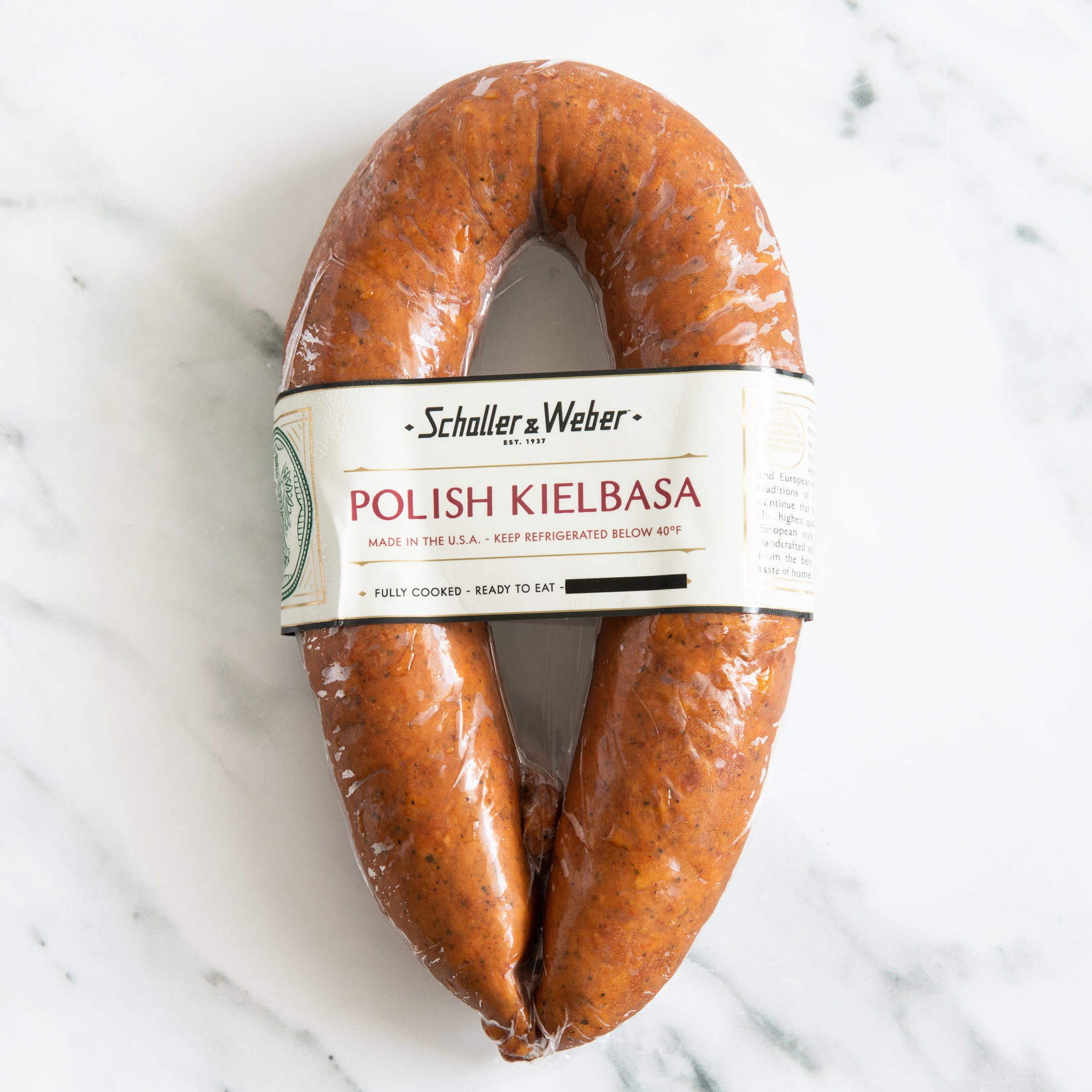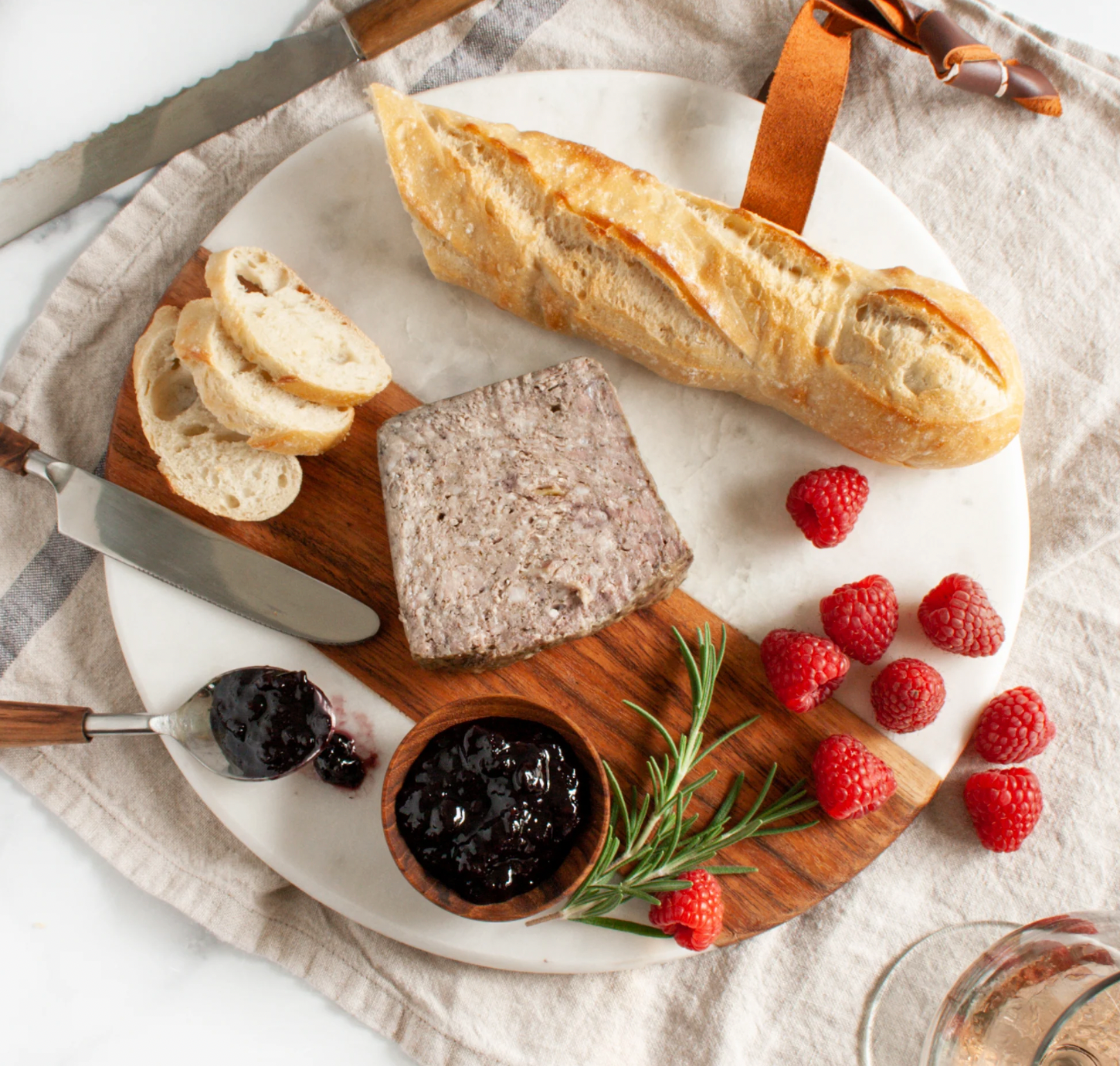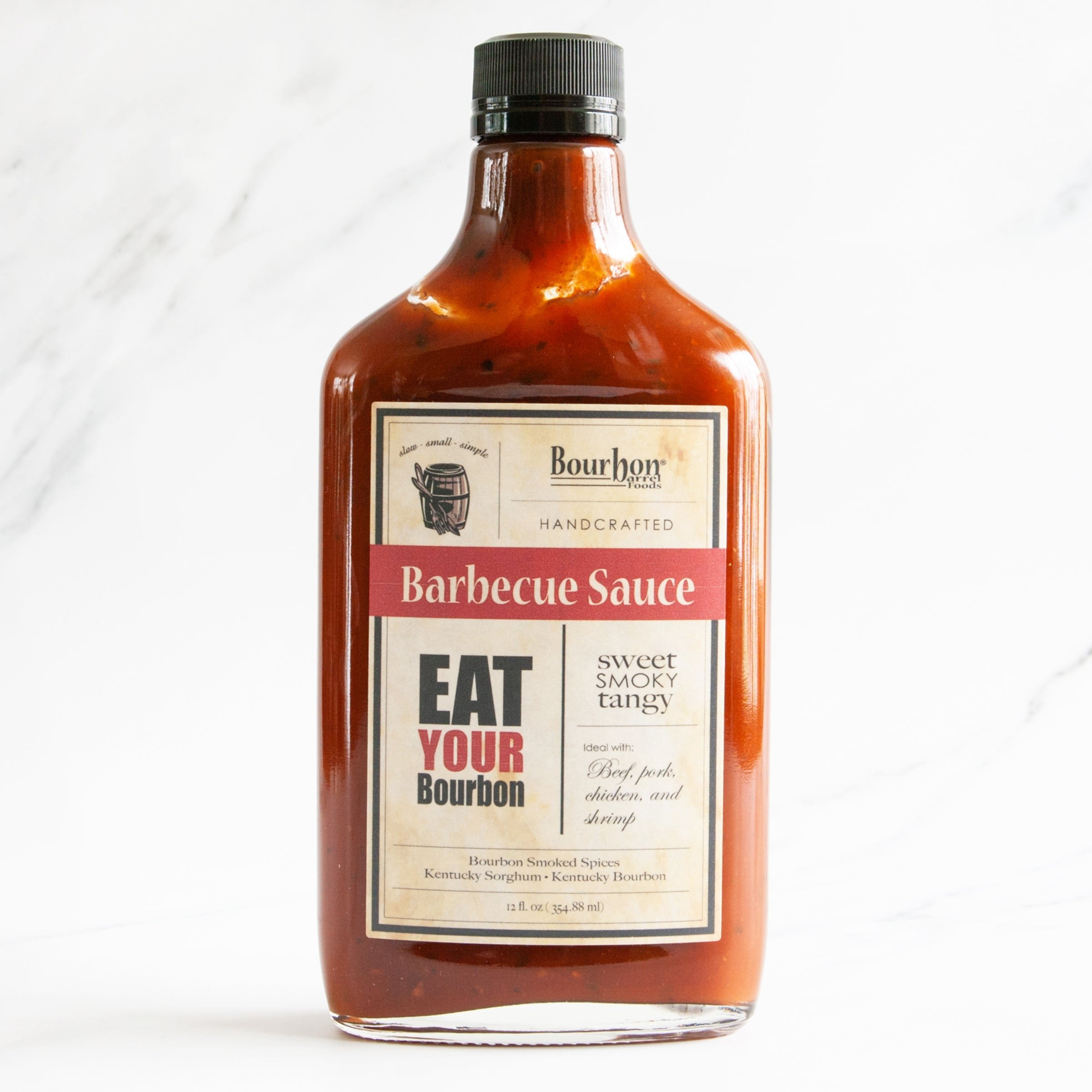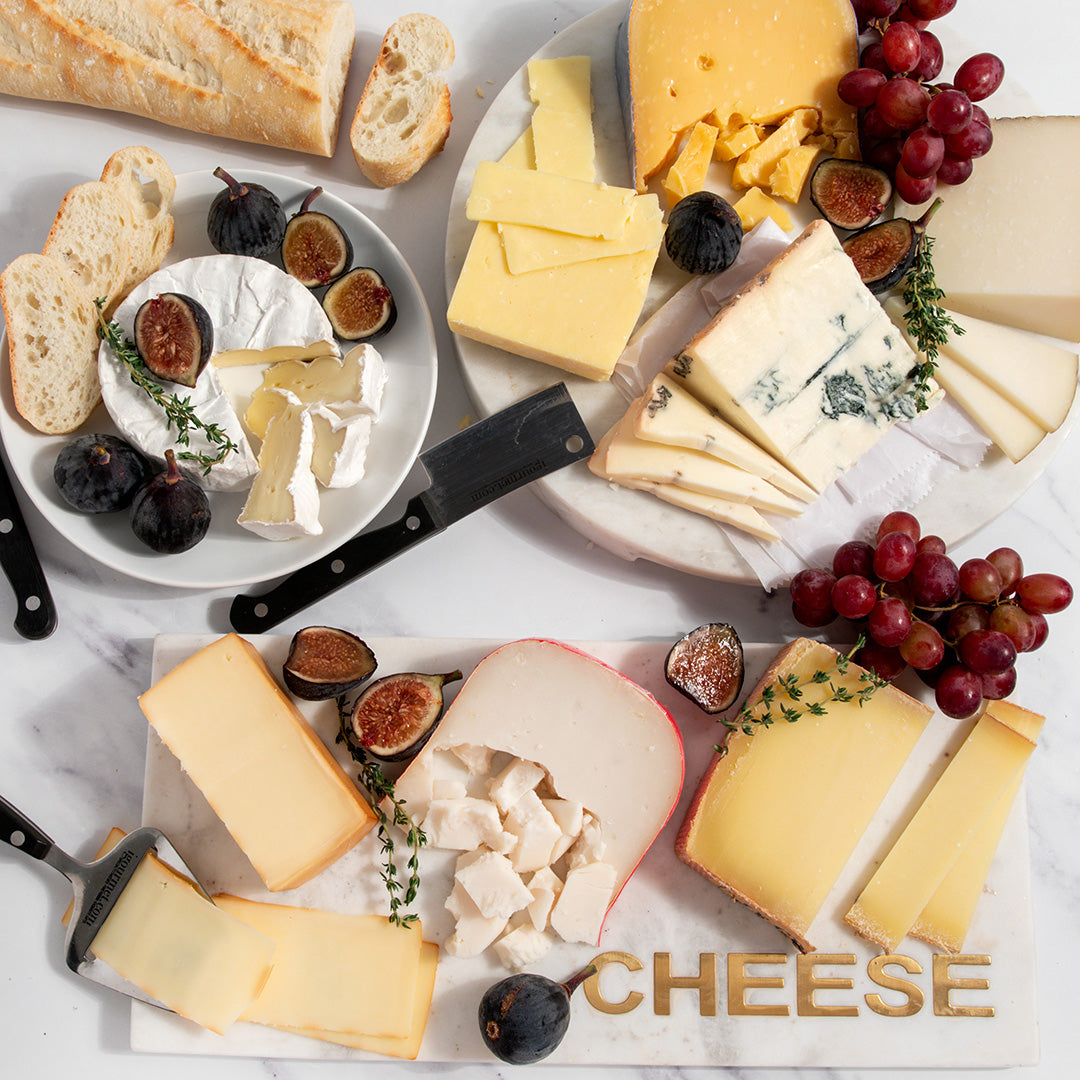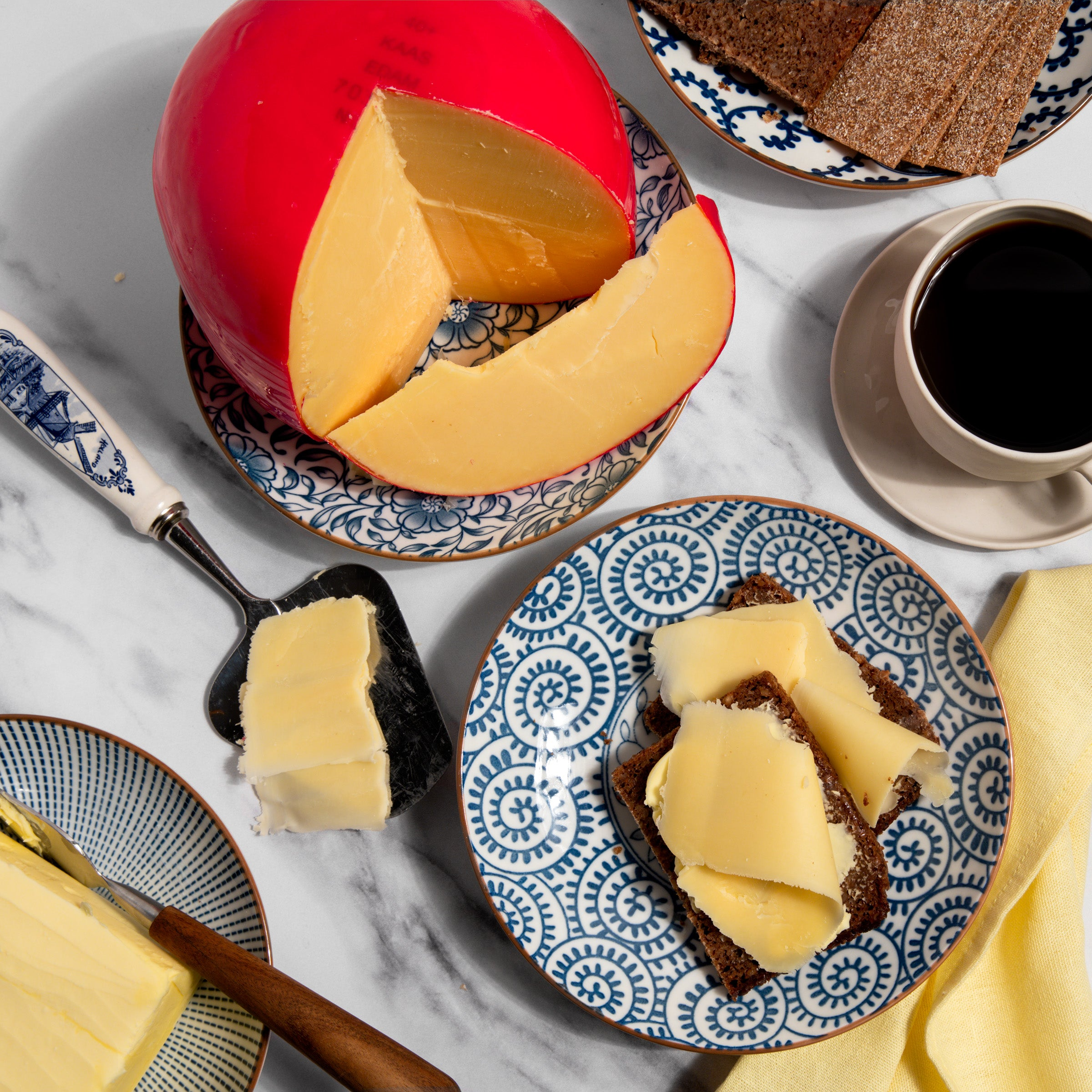Guide to Cheese Types
Honey - Gourmet Guide
June 12, 2019 | By Dave Mattingly
Honey is a sweet natural substance made by honey bees from the nectar of flowers. Evidence suggests that humans gathered honey as many as 8,000 years ago as a Mesolithic rock painting from Spain depicts humans foraging for honey in beehives. Since ancient times humans have consumed honey in food and drink and have used honey for religious offerings, medicine, currency, cosmetics, embalming, building, and art.
Honey's role in human history is prominent, as cultures throughout the centuries valued honey for its wide array of uses. As early as 2,000 BC, honey was mentioned in ancient Egyptian and Indian texts. Archaeologists have discovered honey combs buried with Egyptian pharaohs in their tombs. In Greek mythology, honey was often considered "ambrosia", a food or drink of the Greek Gods. Honey was also an important ingredient in cooking and baking in Greece. Hippocrates, the father of modern medicine, championed honey not only for its nutritional benefits but also for its medicinal values. The Romans even used honey as a topical medicine for healing their wounds during battles. Napoleon revered honey so much that he had bees embroidered onto his clothes and the flag of his army. By the 11th Century, German peasants paid feudal lords with honey.
A natural alternative to sugar, Honey consists mostly of fructose and glucose with small amounts of enzymes, vitamins and minerals. It also retains the natural aromas from the flowers from which it was derived. Honey is produced by honey bees. Three types of bees constitute a beehive: a queen bee, male drone bees and worker bees. Worker bees collect nectar from flowers and convert the nectar to honey to be stored in wax honeycombs inside the beehive. The bees then fans their wings in order to help with the evaporation of the water content of the honey. Once a human extracts honey from the honeycomb and properly seals it, it should have a long shelf-life, as some honey has been found to be preserved for decades and sometimes even centuries. For practical purposes though, manufacturers often put a two year expiration date on their honey jars.
Honey's flavor and color is determined by the source of the nectar, that of course being flower blossoms. In nature, bees will be attracted to just about any flower. However, beekeepers bring their bees to specific flower groves to create monofloral honeys like Acacia, Tupelo and Chestnut. In the US alone there are over 300 varieties of honey, most of them named for the flower from which they originate, such as Clover, Orange Blossom or Sage. Typically, lighter colored honey is milder, whereas darker colored honey is richer and more intense in flavor.
Single Flower Honey Varieties:
Acacia Honey: Our Acacia Honey is sourced from the blossoms of the Acacia "tree" (actually a legume) in Tuscany. This highly sought after honey does not crystallize, is very clear in appearance and has a delicate sweetness with hints of almond and vanilla. Acacia Honey is quite versatile. Enjoy it in tea or with cheese, where it adds a delicate sweetness to the salty tang of pecorino or gorgonzola.
Apple Blossom Honey: A light colored honey made by bees that harvest the nectar from those big, bright white apple blossoms we all know and love. This particular honey goes great with tea.
Buckwheat Honey: Buckwheat Honey is as stout and complex as honey gets. Extremely dark in appearance, it compares to other sweeteners like sorghum and molasses. Hints of mossy earth and its not-so-sweet character combine to yield a malty flavor and long but enjoyable finish. Buckwheat Honey is recommended as a drizzle over goat cheese or stirred into plain greek yogurt.
Carrot Blossom Honey: Carrot blossoms are naturally an excellent source of nectar for honeybees. Carrots that are harvested for their roots are plucked from the ground before their flower blossom, so Carrot Blossom Honey can only be made from carrot fields that are not intended for harvest. Carrot Blossom Honey has hints of cedar, herbs, pepper, earth and musk and offers a hint of sour to go along with its natural sweetness.
Chestnut Honey: Castagno (Italian for Chestnut) Honey is quite dark in color, owing to its high mineral content. It is strong in taste and aroma and offers a slightly bitter aftertaste. Chestnut Honey resists crystallization thasnks to its high fructose content. This unique, not overly sweet honey from Italy (ours comes from Tuscany) is excellent drizzled over cheeses like Pecorino Toscano or Grana Padano.
Clover Honey: This popular light amber honey can be made in any of the world's temperate climate zones. It has a mild and pure flavor with a high level of sweetness (even for a honey) and a delicate aroma.
Coriander Blossom Honey: Harvested from May to June, this rare honey is prized for its intense aroma, as the herb's bold smell and taste carries over to the nectar, and then to the honey produced by the bees. This gourmet honey is yellowish in appearance with a spicy character and a creamy texture. Coriander Honey is popular in Germany and parts of northern Italy.
Dandelion Honey: The dandelion is one of America's most hated weeds. However, in ancient times, the dandelion was revered as a nutritious source of food and as a natural healing agent for a wide variety of illnesses. Perhaps because of its negative perception, but also because of its propensity to crystallize, Dandelion Honey is a rare find. Ours comes from Italy's Piedmont region. Dandelion Honey has a sharp flavor and a mild aroma. Its creamy, buttery texture makes it ideal for spreading on toast.
Eucalyptus Honey: There are over 500 distinct Eucalytpus species throughout its major growing regions of Australia and California. Eucalyptus Honey is widely available, known for its menthol flavor that may not be pleasing to the uninitiated. This herbal honey is often cited as a protection against colds and headaches. Attention tea lovers: a spoonful of Eucalyptus Honey is a great addition to a hot cup of English Breakfast.
Heather Honey: Thick in consistency and medium amber in color with red-orange hues, Heather Honey has one of the strongest and most pungent flavors of any honey. It is fragrant and floral with a long aftertaste that is almost bitter, but not off putting. Given its pungency, it is best used as a glaze for meats like ham, chicken or lamb. Prized since ancient times due to its medicinal properties, Heather Honey is often found in health food stores, marketed as a curative.
Lavender Honey: Lavender Honey is flowery, pleasant, well balanced and rounded. This premium honey has a polished honey aroma and the delicate floral scent of Lavender. An extraordinary sweetener, Lavender Honey offers low acidity without being bitter. Its color ranges from white to light amber. It may lightly crystallize in your pantry, developing very fine granules. Lavender Honey is delicious served over mild, salty cheeses like Feta and Ricotta Salata, and also pairs well with blue cheeses and triple cremes.
Lehua Blossom Honey: The Ohi'a Lehua flower is only found in Hawaii. Organic raw honey made from its nectar has a mild taste and creamy texture that cannot be replicated anywhere else in the world. Once you experience this unique, exotic, gourmet honey, you'll be hooked for life!
Linden Blossom Honey: The magnificent Linden Tree is shrouded in an atmosphere of ancient rituals and ceremonies. Its blossoms yield a pale crystallized honey with highlights of golden yellow and amber. Noted for its fresh, almost minty scent, it has an intense flavor with definite hints of fresh spice. Linden Honey is medium-sweet with a very long finish and a delicately bitter aftertaste. Because of its sedative and antiseptic qualities, it is often recommended to people suffering from anxiety and/or insomnia. This honey is also called Lime Honey or Basswood Honey.
Manuka Honey: Raw organic Manuka Honey, made in New Zealand and parts of Australia from nectar taken from the native Manuka flower, is known to soothe the common cold, cool a sore throat and has been found to help alleviate a variety of other ailments, including sinusitis caused by Staph infection. Manuka honey is delightful with tea, on toast or when used in cooking and baking.
Orange Blossom Honey: This popular straw colored honey varies from straw yellow to pearly white to light beige if crystallized. Its fragrance is clearly reminiscent of orange blossom. With time the flavor of Orange Blossom Honey takes on additional, delicately fruity and slightly acidic overtones. It crystallizes spontaneously a few months after harvest into granules of various sizes.
Rosemary Honey: This popular pale-hued honey is often crystallized into a creamy spread. Its rosemary fragrance is quite noticeable. The herbaceous notes in this gourmet honey cut its sweetness, making it a versatile product.
Sage Honey: Don't let the light color of Black Sage Honey fool you, as this honey boasts a delightfully robust flavor. It is extremely resistant to crystallizing, making it an excellent choice for sweetening tea or adding to a marinade or glaze.
Sidr Honey: Sidr Honey comes from bees that take nectar exclusively from the ancient and sacred sidr tree of Yemen. Because of its rarity, it is one of the world's most expensive honeys. Sidr Honey can only produced in the Do'an Valley, located in the mountainous Hadramaout desert in the eastern part of Yemen. It has been found to have similar curative properties to Manuka Honey.
Sulla Honey: This crystallized honey from southern Italy varies in color from wax-white to ice-white. The perfume is very delicate but distinctly floral. The Sulla flower, also known as the French Honeysuckle, yields a refreshingly sweet but not cloying honey with a slight medicinal, eucalyptus-like quality. This is an excellent all around gourmet honey, equally at home served as a spread, drizzled over cheese or used as a sweetener for tea.
Sunflower Honey: This important honey is often underestimated. It is very rich in glucose, giving it a propensity to crystallize and making it an excellent spread. A bright yellow honey, when crystallized it deepens to yolk yellow. Its aroma has delicate hints of pollen and damp hay. Particularly crisp to the palate, it can be reminiscent of green tomato and apricot.
Thistle Honey: Thistle Honey ranges in color from light to medium amber with orange hues. It has a medium intensity aroma with elements of fruit, chrysanthemum and daisy. Thistle Honey's taste is medium sweet and slightly sour with hints of caramel and spice.
Thyme Honey: Thyme Honey was the ancient Greeks' favorite honey. It comes in varying shades of amber and beige or hazelnut, if crystallized it offers an intense aroma of magnolia, aromatic herbs and graphite. Its taste is sweet and persistent, fresh and reminiscent of tropical fruits, dates and white pepper. Thyme Honey crystallizes spontaneously in a short time into medium or fine grains.
Tupelo Honey: Tupelo Honey, made in southern Georgia and parts of Florida from nectar taken from the native Tupelo tree flower, is a premium quality honey with a distinctly delicious, sweet flavor that does not crystallize. Dress up a breakfast of pancakes, waffles or toast with this divinely sweet honey. Tupelo Honey is clear gold in color with a characteristic greenish glow.
Honey Formats:
Liquid Honey: Liquid Honey is the most common form of honey produced and sold in the US. Liquid honey is may extracted from the honey comb by centrifugal force, straining or gravity. Liquid honey has no visible crystals in its composition.
Comb Honey: Comb honey is honey in its original form that comes directly from the wax honeycomb.
Crystallized Honey: Crystallized honey, also called "granulated honey" is honey whose partial glucose content has crystallized, making it no longer viscous or pourable. A liquid honey that has become crystallized can be restored to liquid by adding a bit of distilled water and heating the jar by immersing it in a pot of hot water.
Whipped Honey: Whipped honey, also called "creamed honey" is honey that has undergone a crystallization process which, at room temperature, allows the honey to be spread like butter.
Chunk Honey: Chunk honey contains pieces of comb honey surrounded in liquid honey.
Raw Honey: Raw honey is honey that has not been heated or pasteurized. Raw honey retains vitamins, enzymes and minerals that the heating process removes. Raw honey usually contains some pollen and small pieces of wax.
Benefits of Honey
Honey has been used historically to treat many human ailments either through ingestion or topical application. Honey has been used as a home remedy for ailments from athlete's foot to arthritis pain. Honey is often used as a first aid treatment for cuts and burns. Honey has anti-microbial qualities that inhibits bacteria growth and helps to keep wounds clean and deters infection. Honey also acts as an anti-inflammatory to help reduce swelling. Honey has been found to be a natural cough suppressant, and for sore throats, Honey helps to stop bacterial growth.
Honey is a wonderful natural source of energy, as Honey contains 17 grams of carbohydrates per tablespoon. Since the human body uses carbohydrates as its main source of fuel for energy, Honey is the perfect choice when an extra jolt of energy is needed.
Many seasonal allergy sufferers benefit from local Raw Honey which contains pollen from local flowers. This pollen may help reduce sensitivity and histamine production in the allergy sufferer.
Honey is a natural humectant and when used in skin products, Honey helps retain moisture, and is an emollient addition to cleansers, moisturizers, shampoos and conditioners.
It is important not to forget that while honey is prized for its many uses by humans, honey bees also pollinate food-producing plants throughout the world, making honey bees one of the most economically important insects in the world.
Interesting Facts About Honey:
Honeybees must visit over two million flowers and collectively travel as much as 50,000 miles in order to produce one pound of honey.
Honeybees have two stomachs: one for their regular use and one used for carrying harvested nectar. When their nectar stomach is full it weighs as much as the bee itself.
During its lifespan, the average worker bee makes only one-twelfth of a teaspoon of honey.
Honey is the only natural food that contains all the substances necessary to sustain human life, including water.
All honey contains a small quantity of botulism spores, the result of its natural production. Although adults can safely consume honey, it should not be fed to infants 12 months or younger. After this age, the infant's immune system is generally strong enough to resist honey's mild strain of botulism.
Start Shopping
Order honey online at igourmet.com. Find the largest selection available and buy varieties like Manuka, Tupelo, Clover, Acacia and more. Even the bees love our selection! To find the best gourmet foods and gift baskets online, begin your search at igourmet.com.








